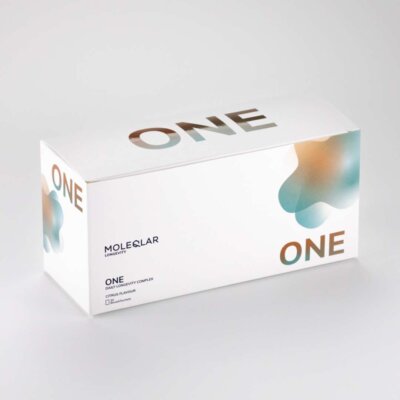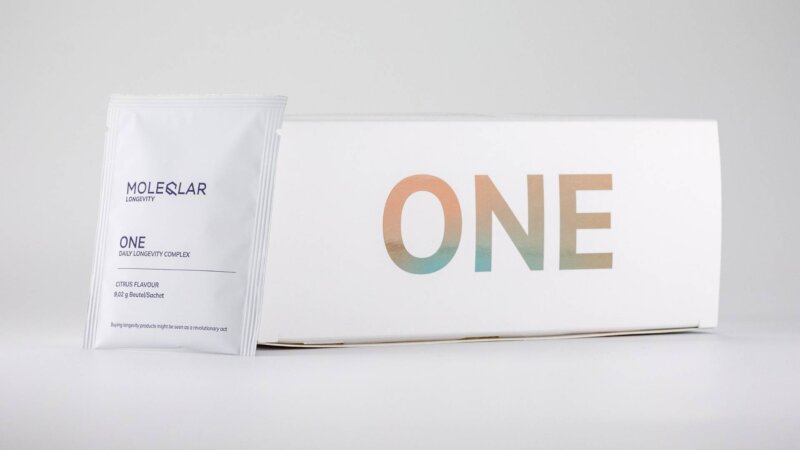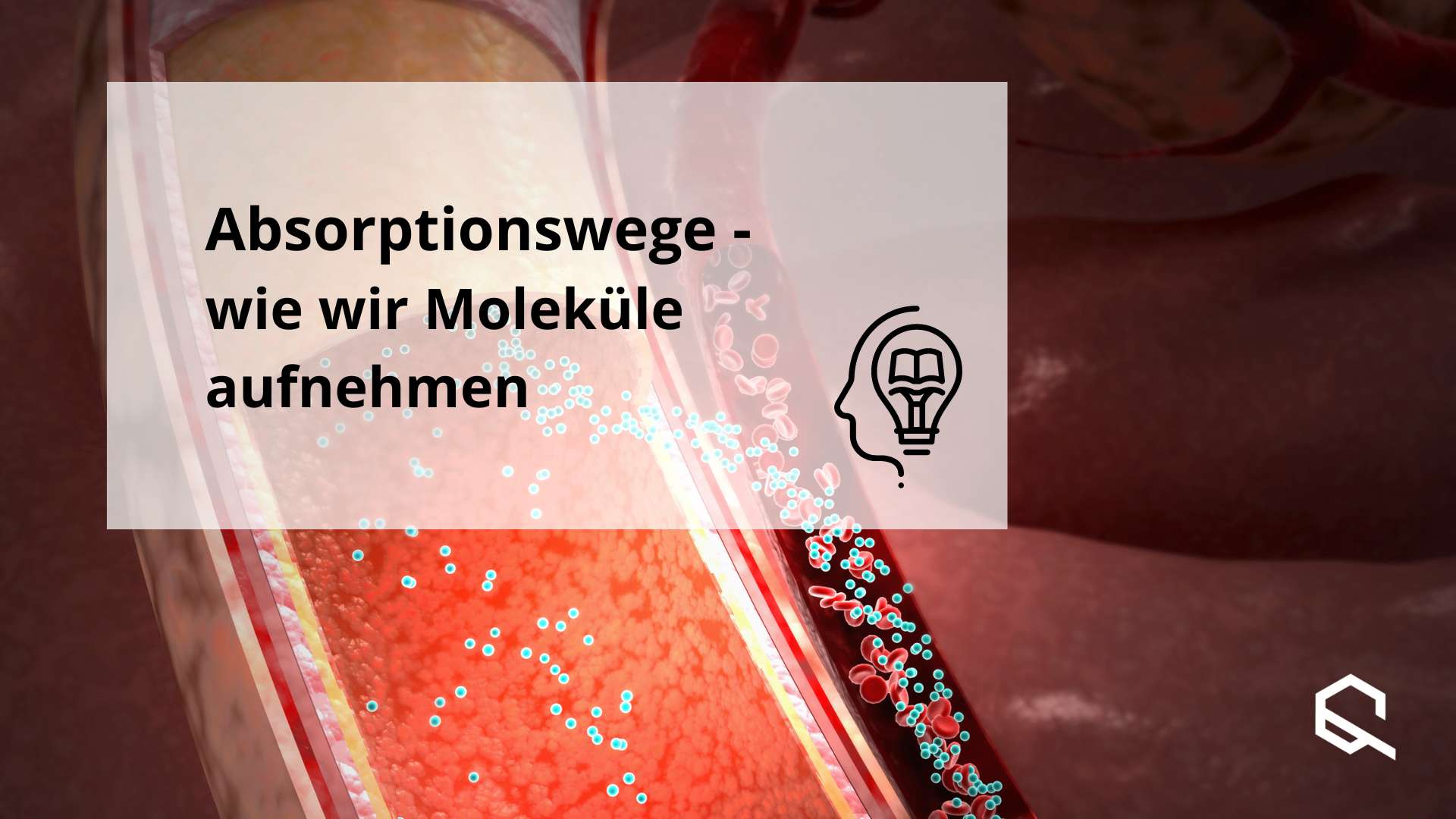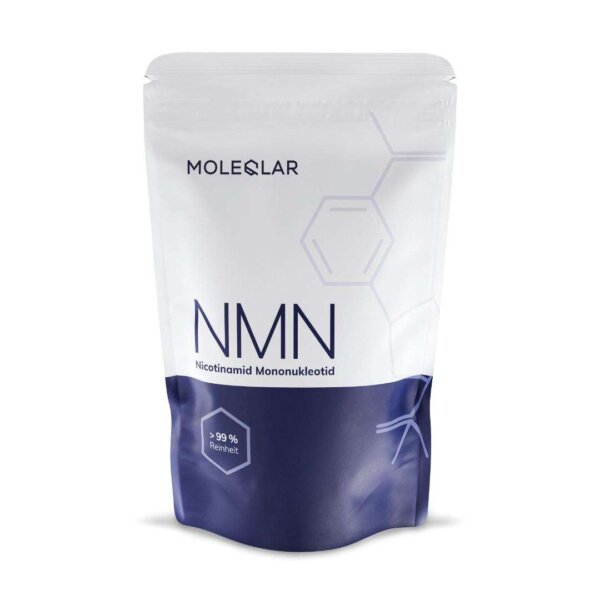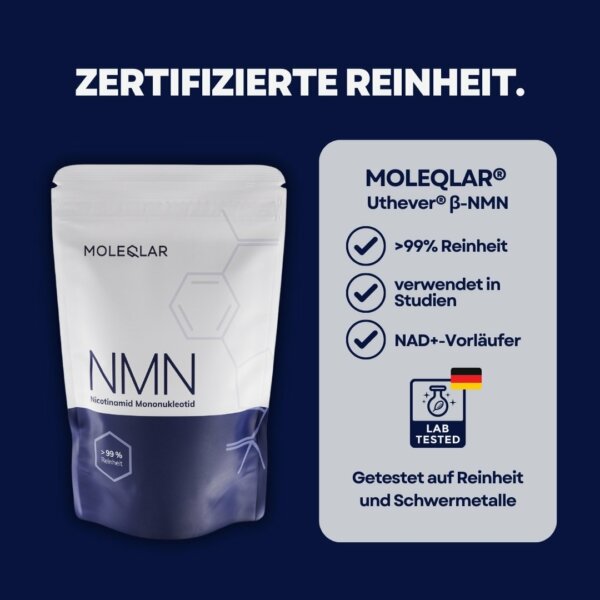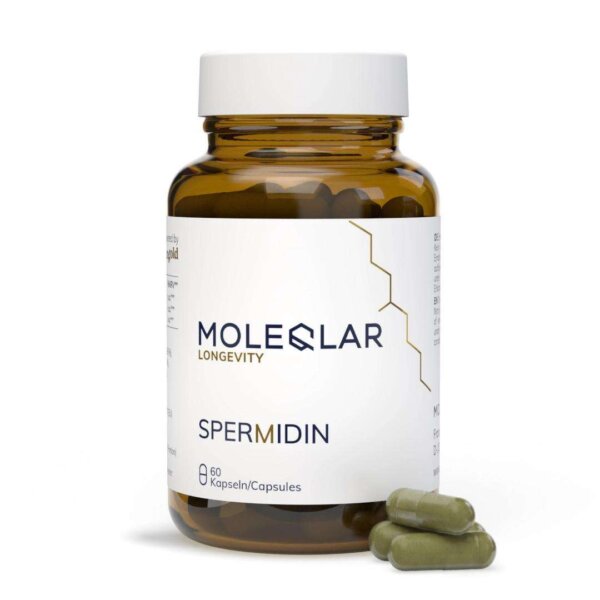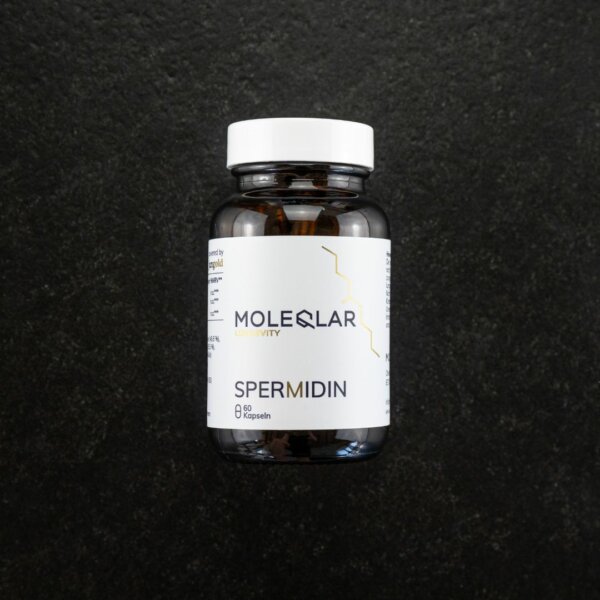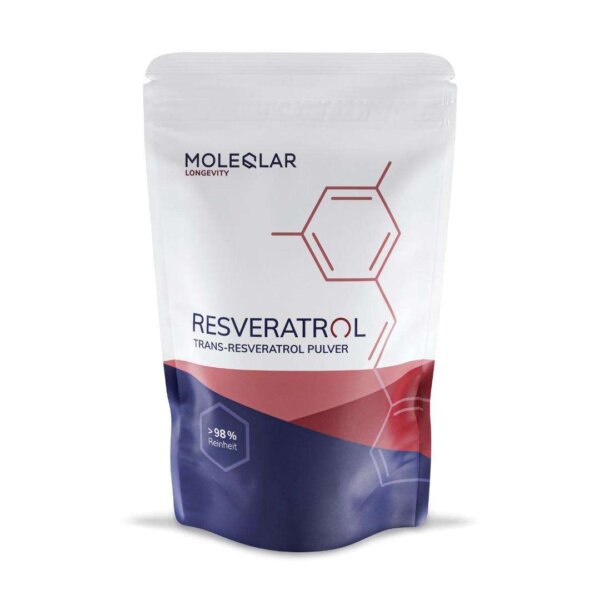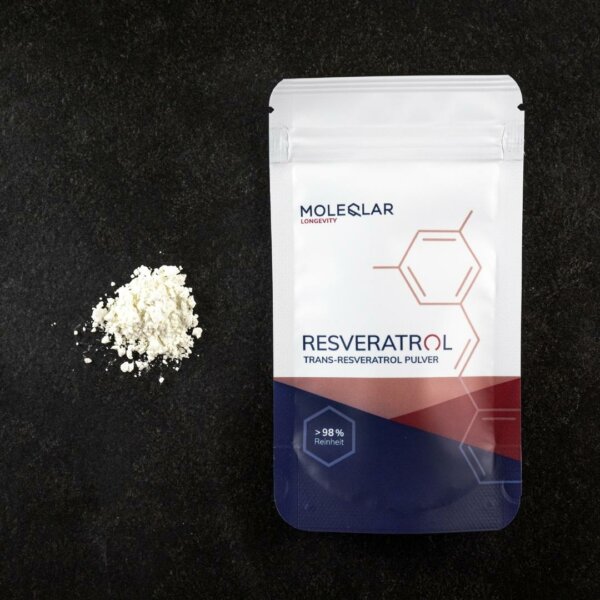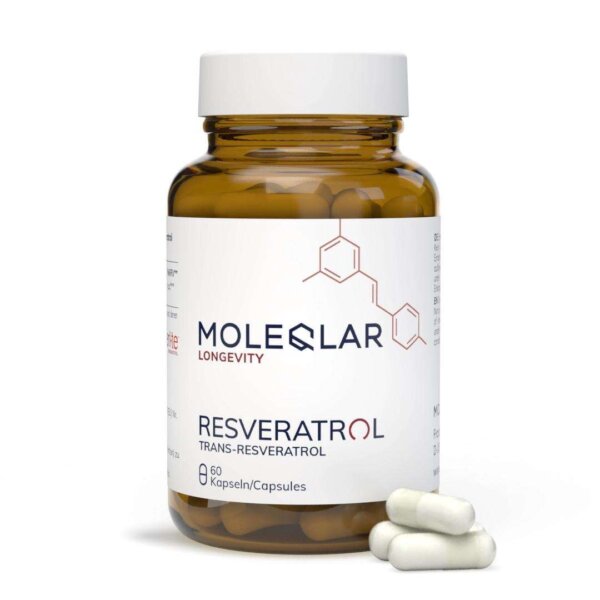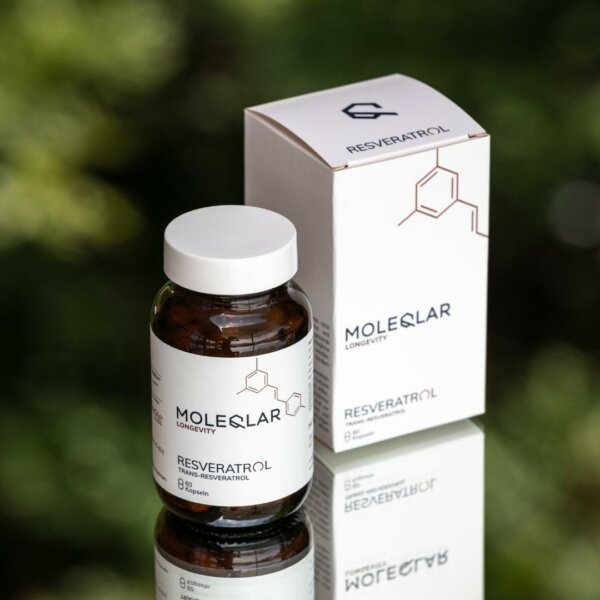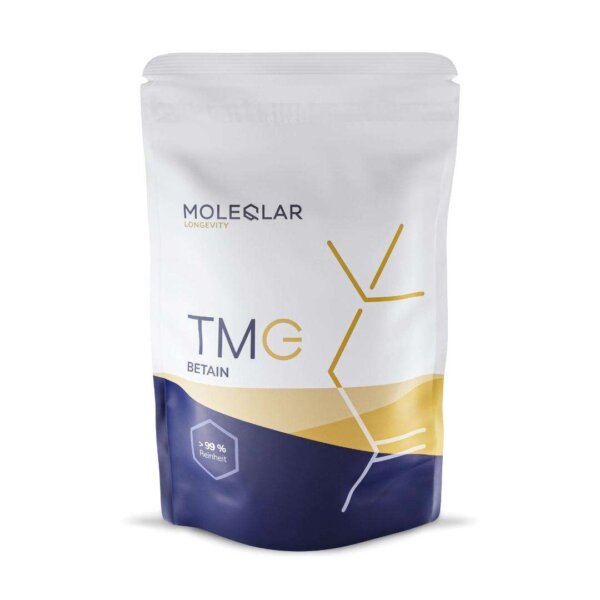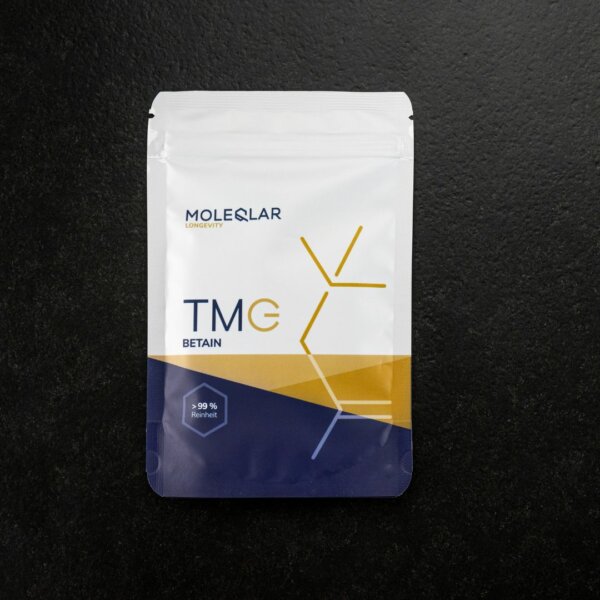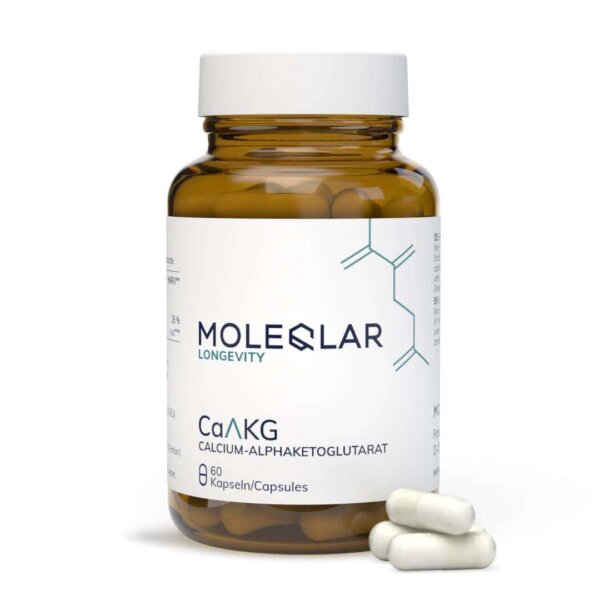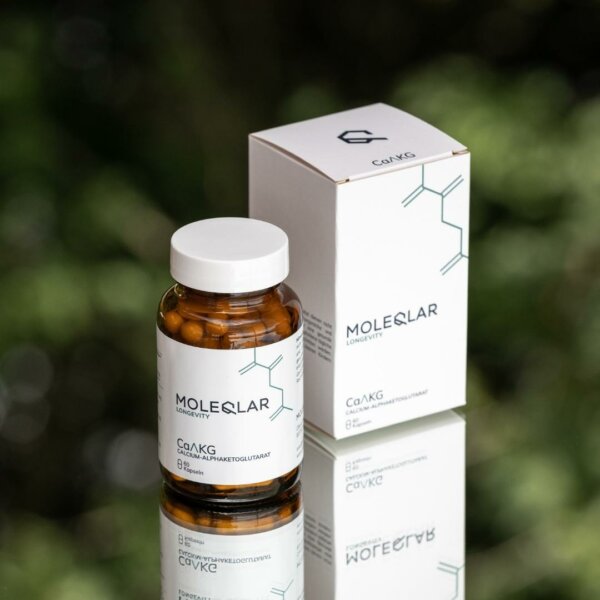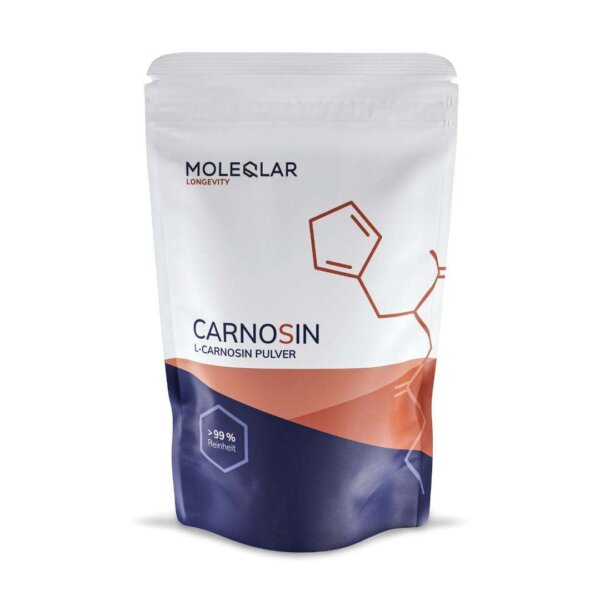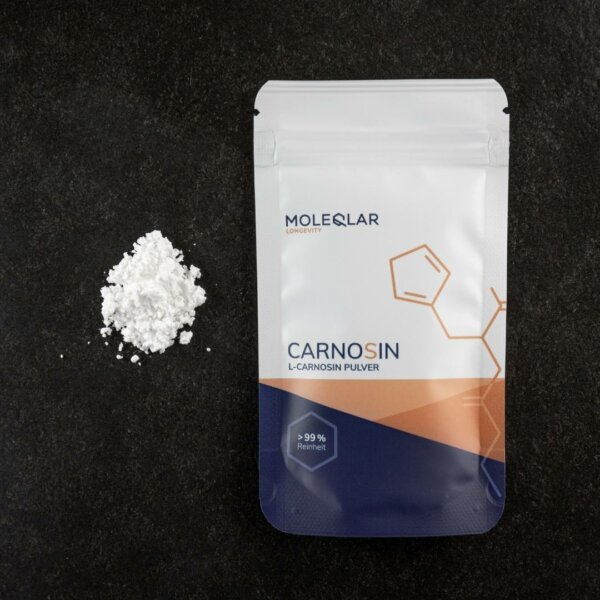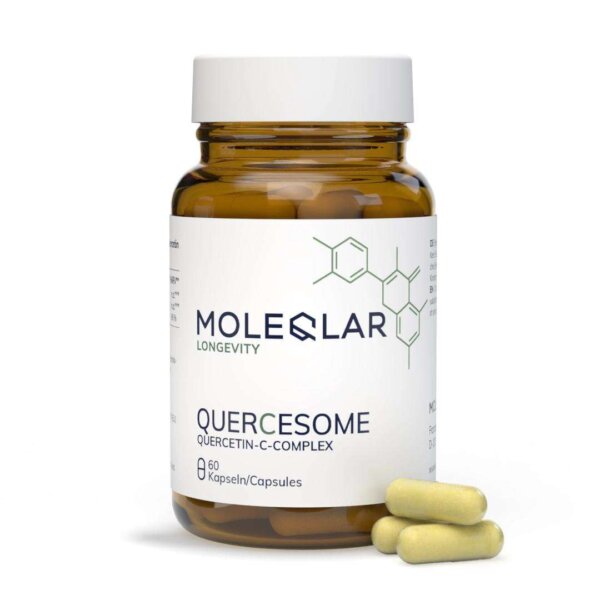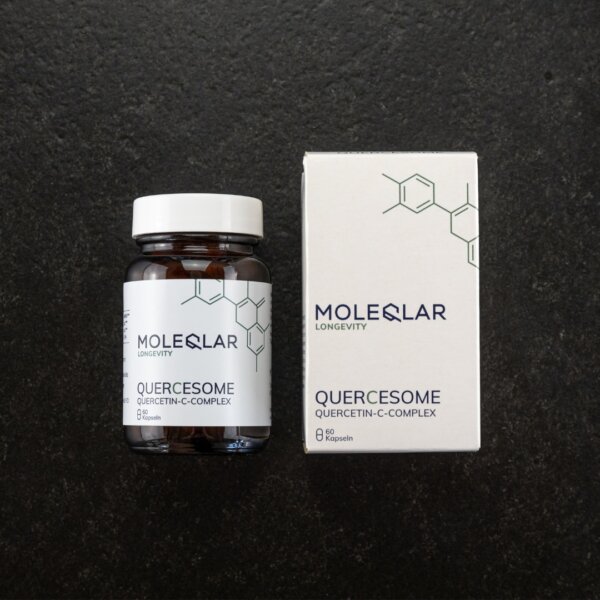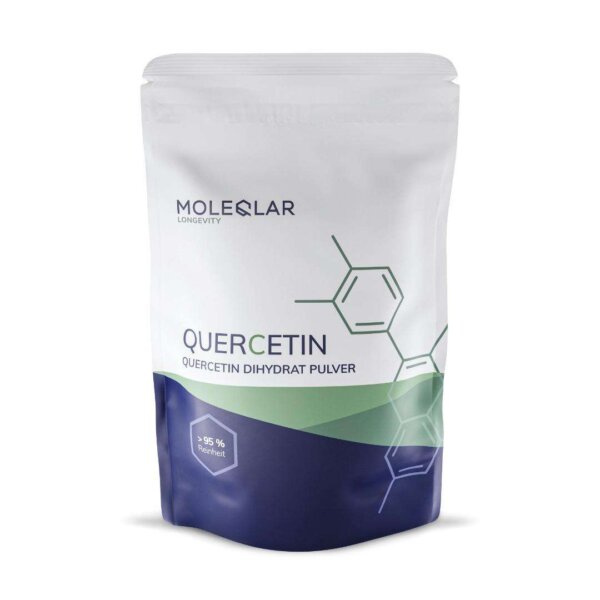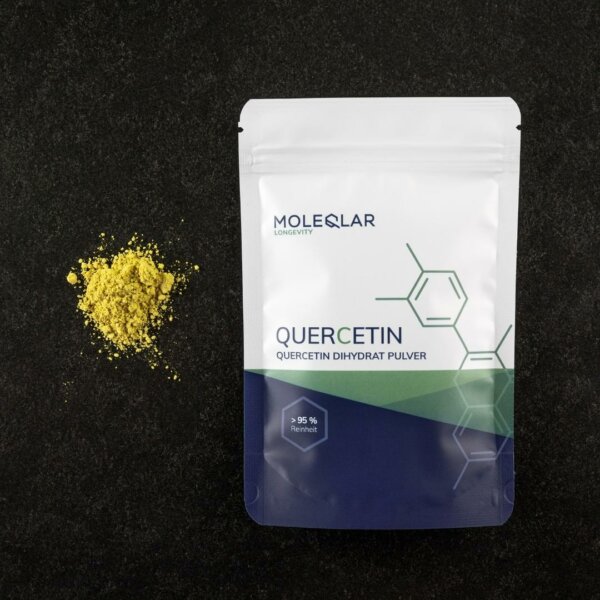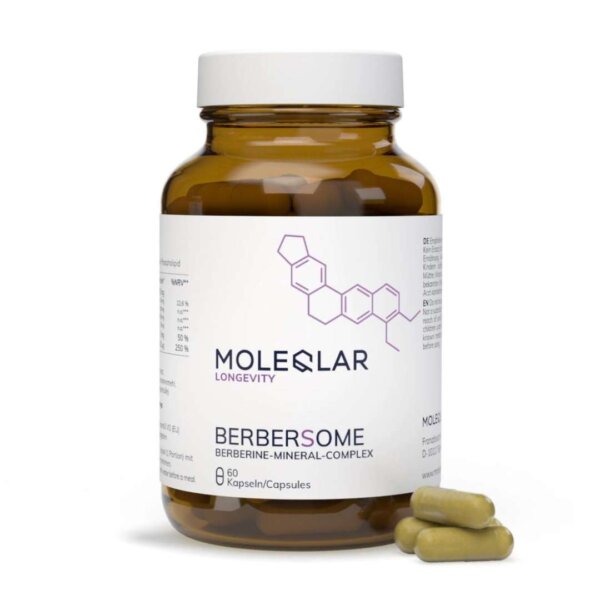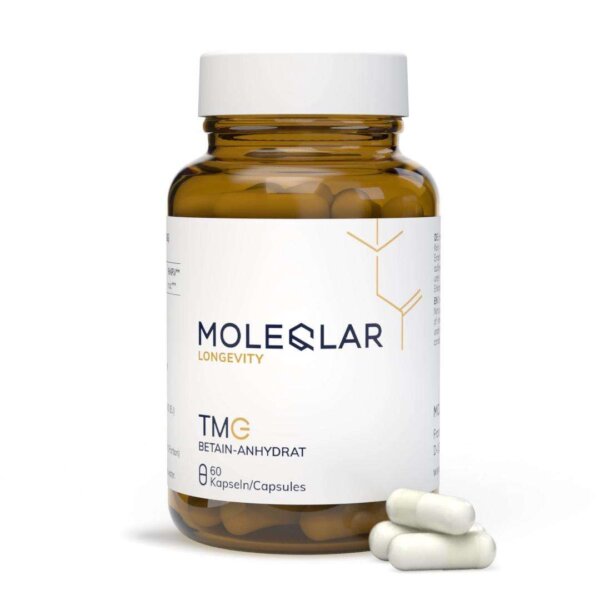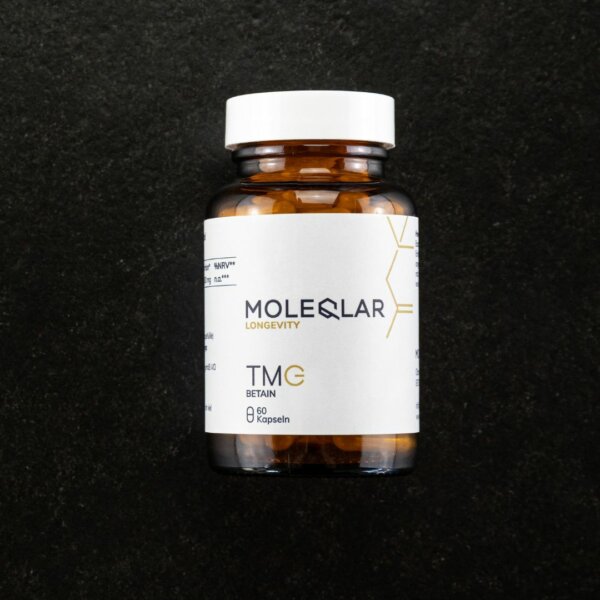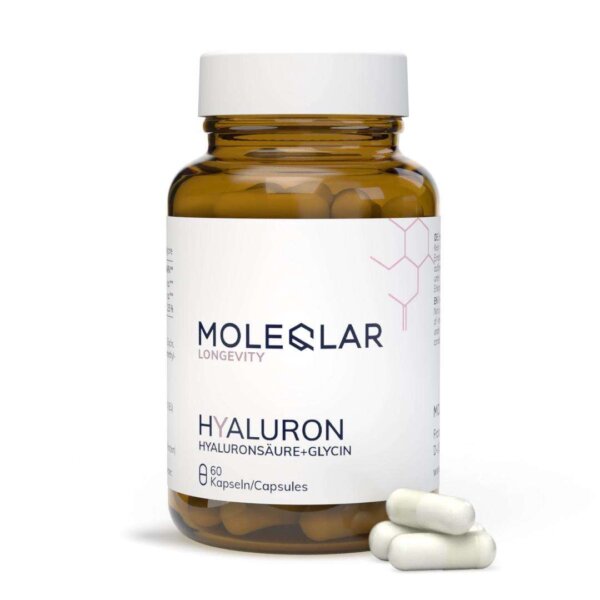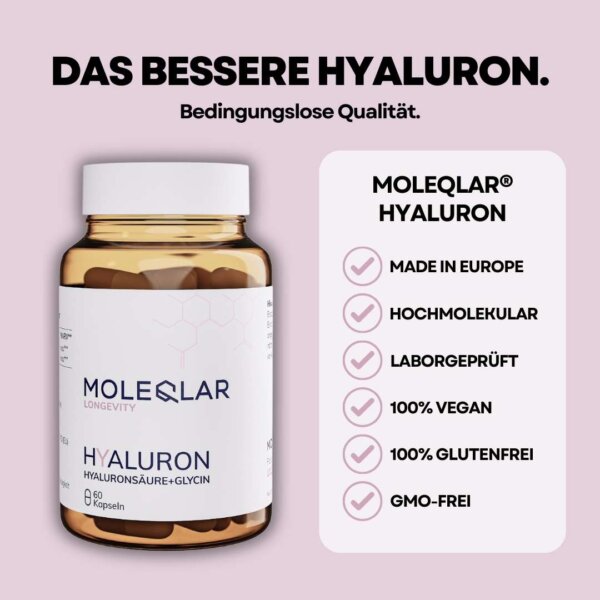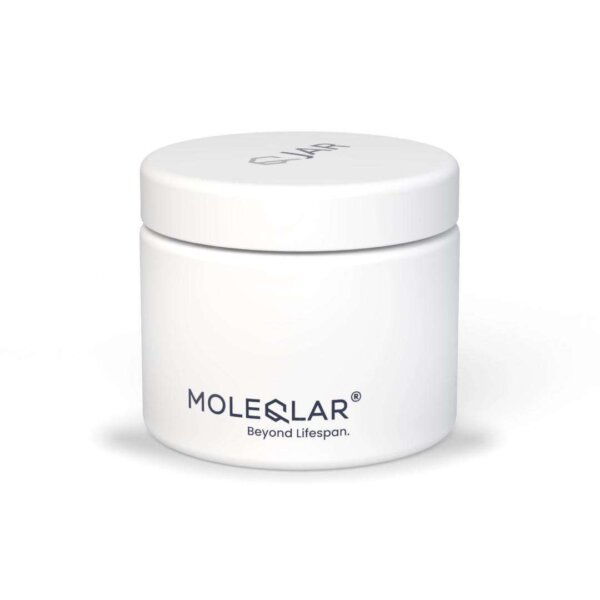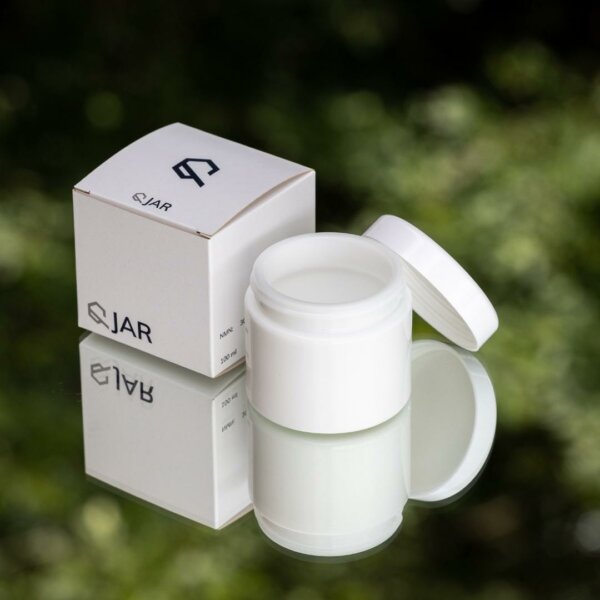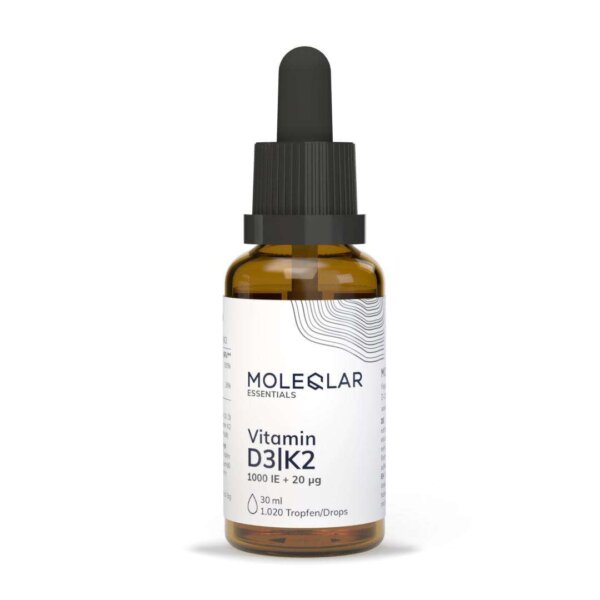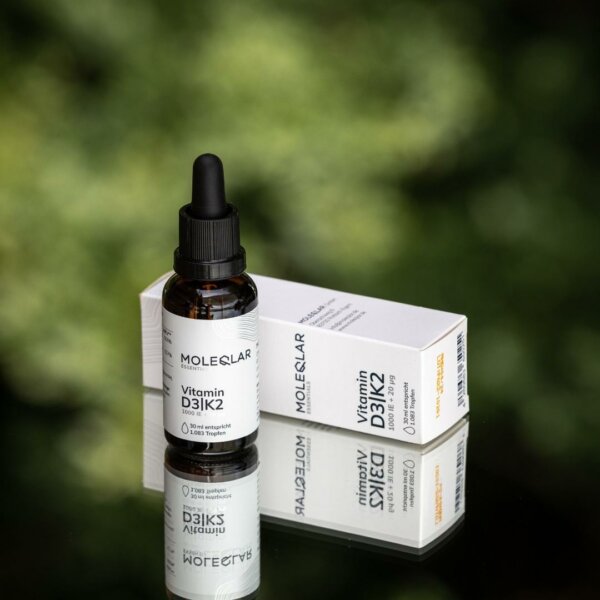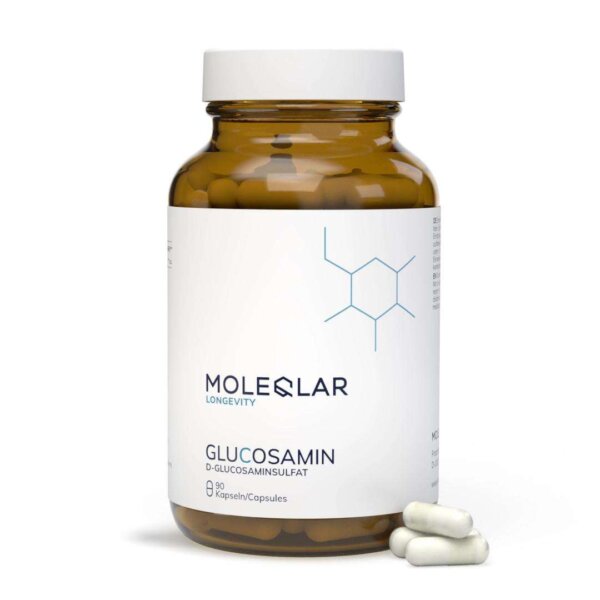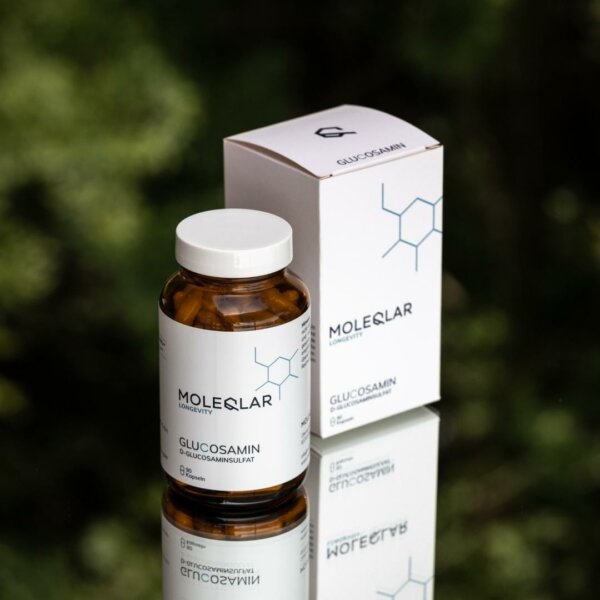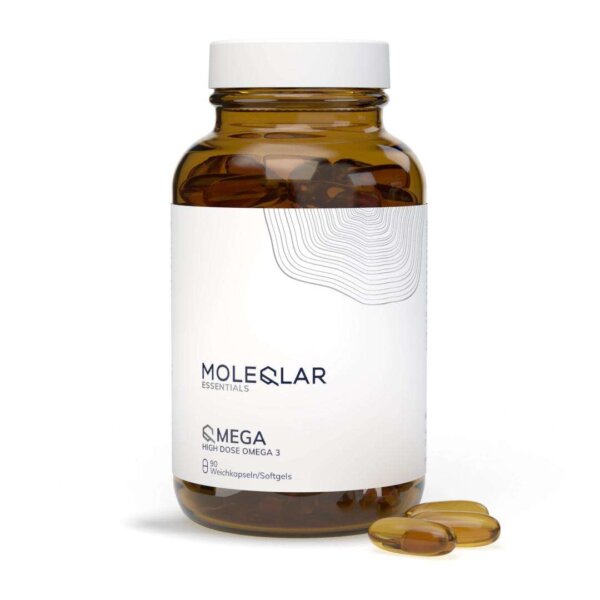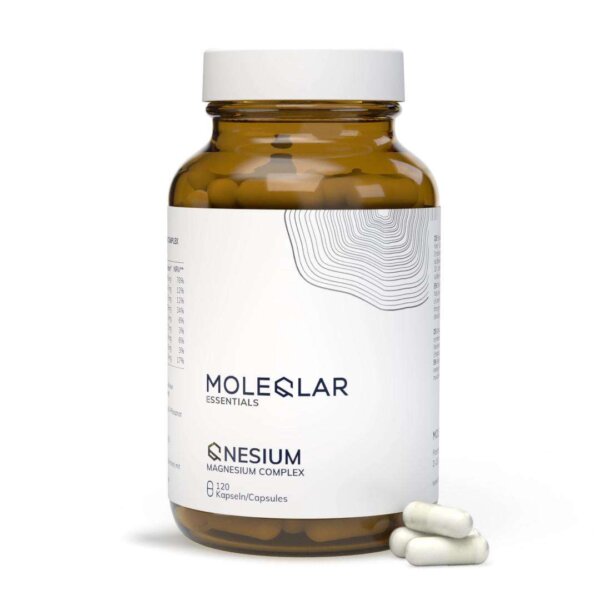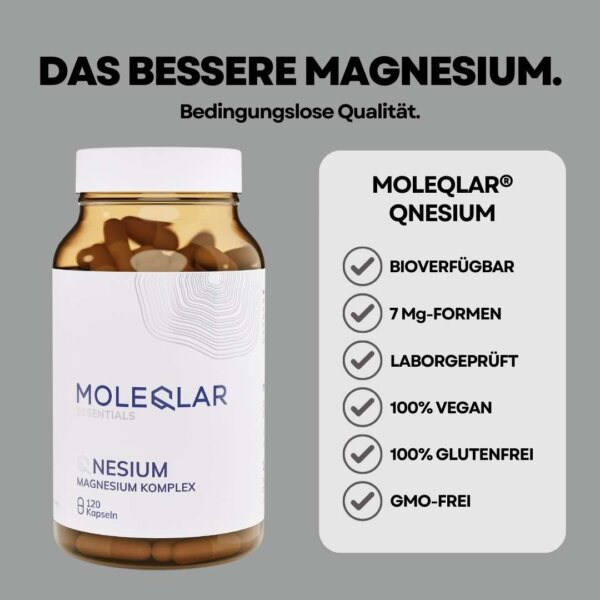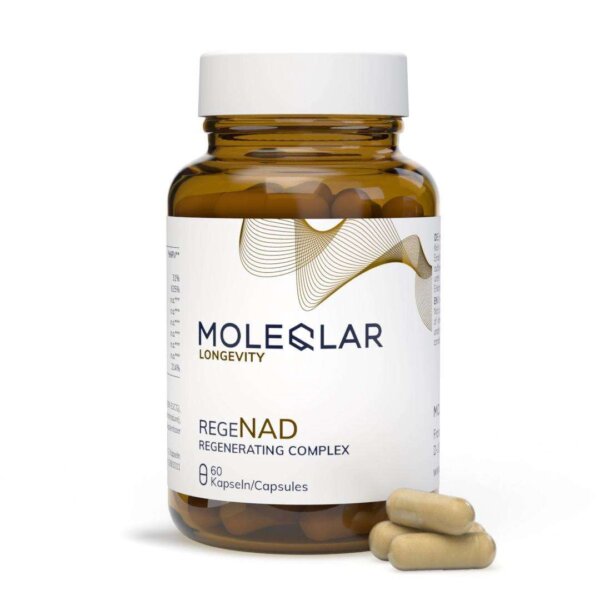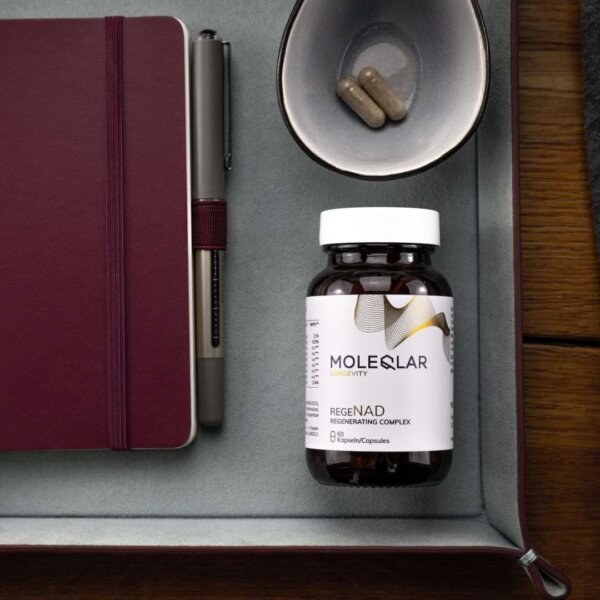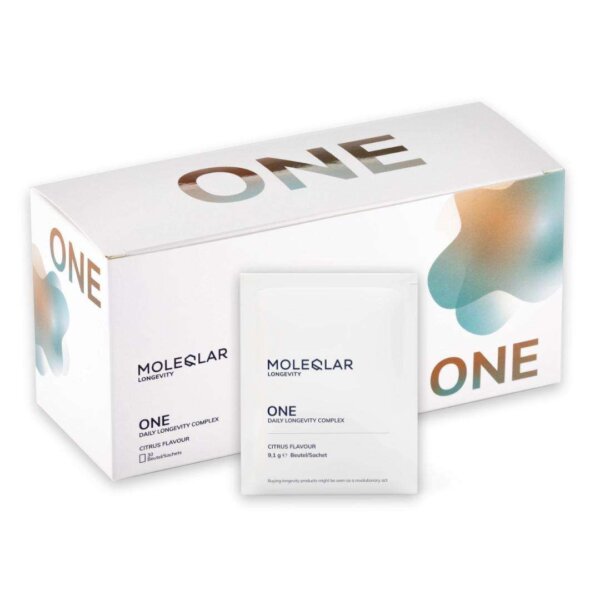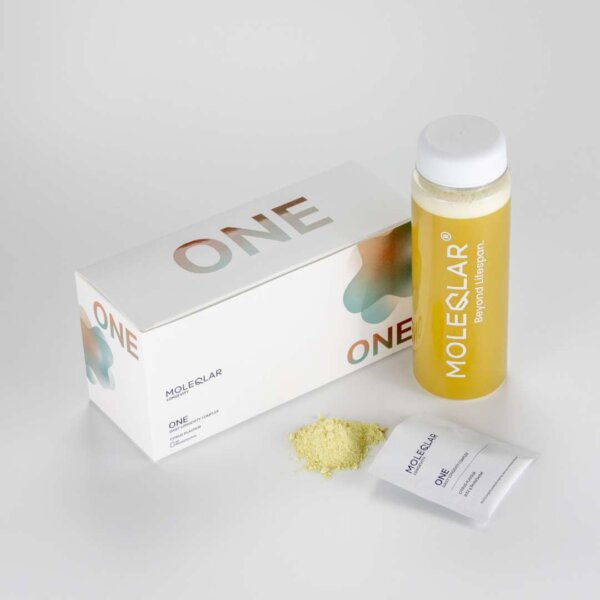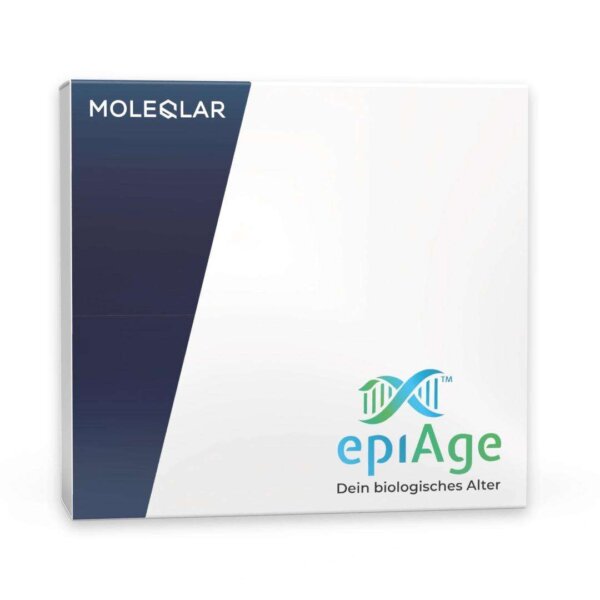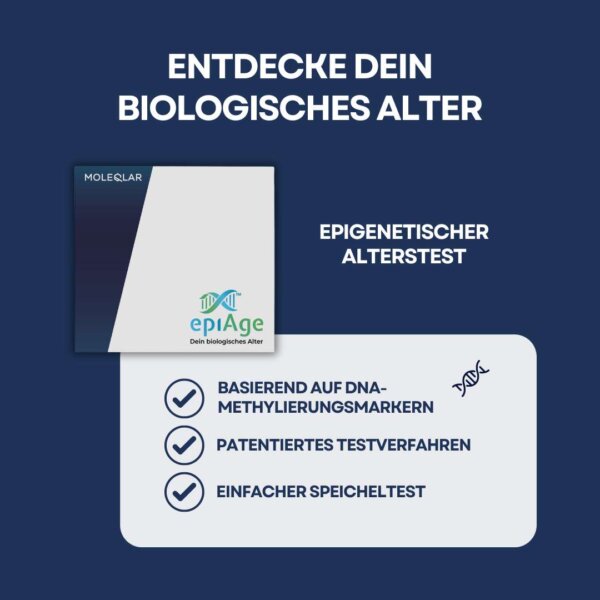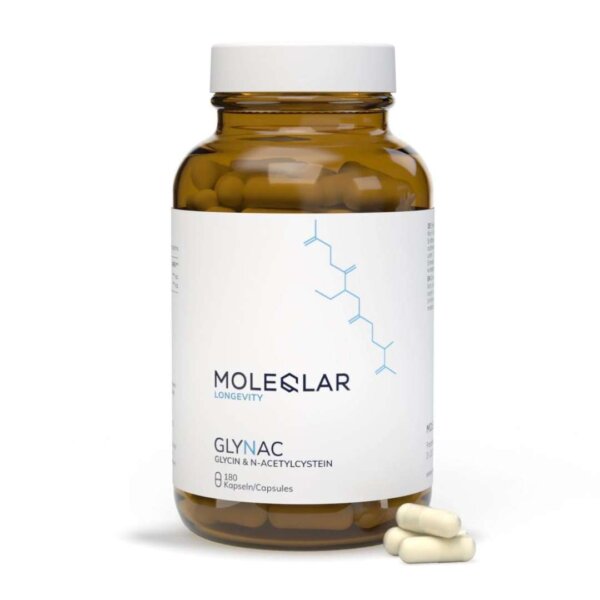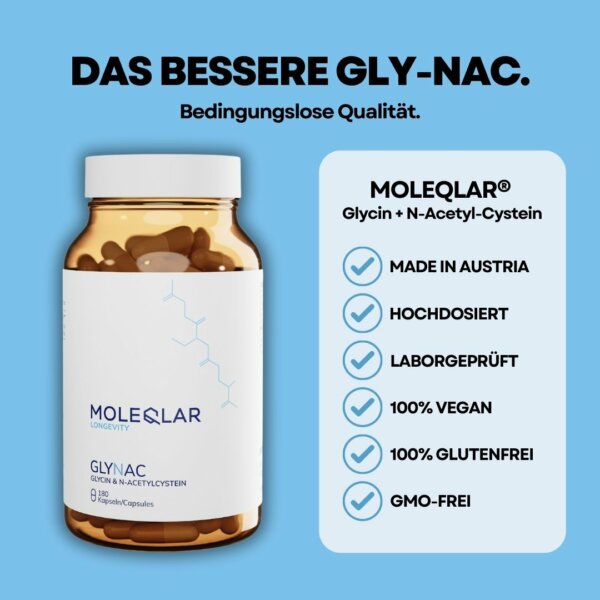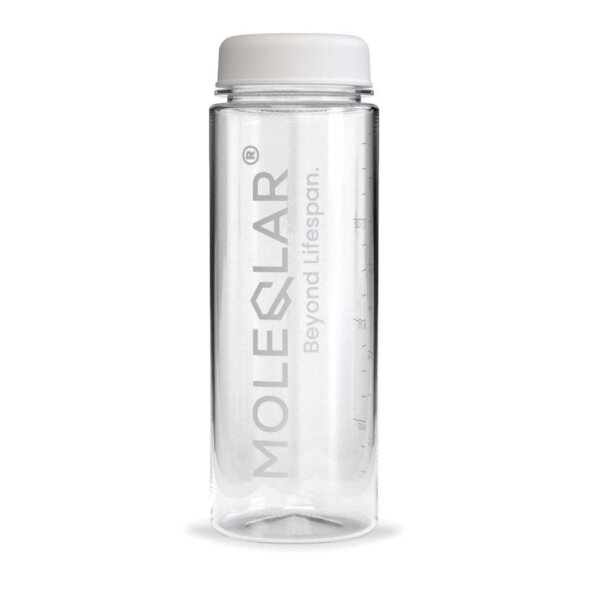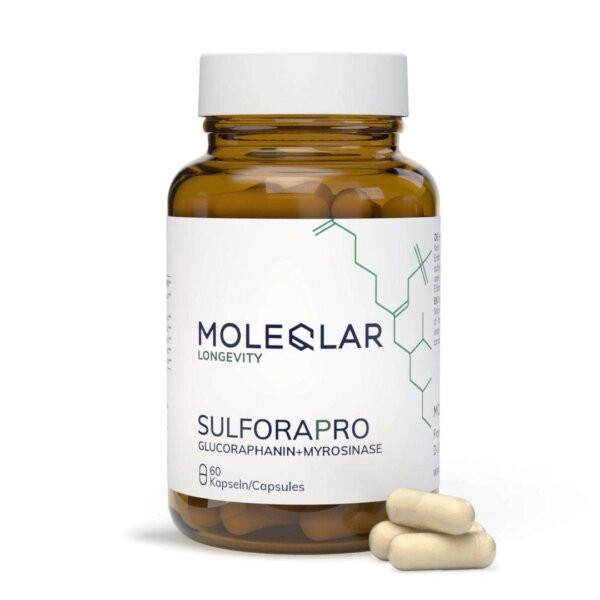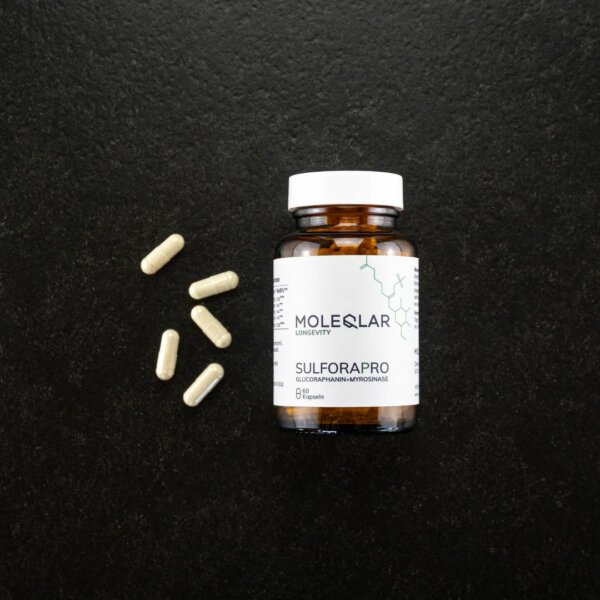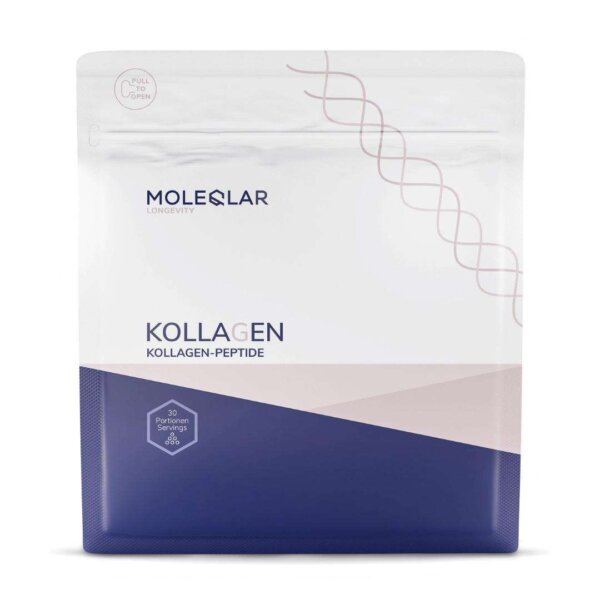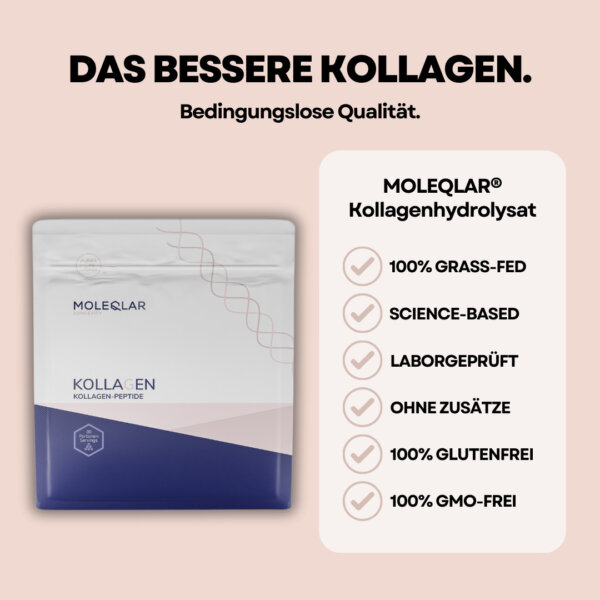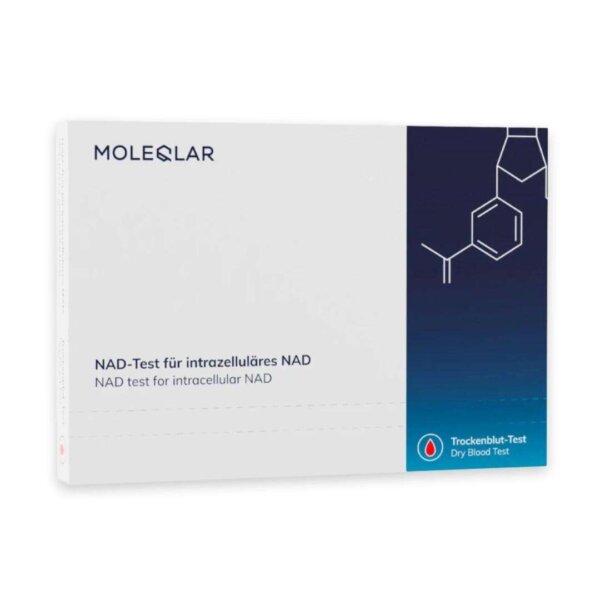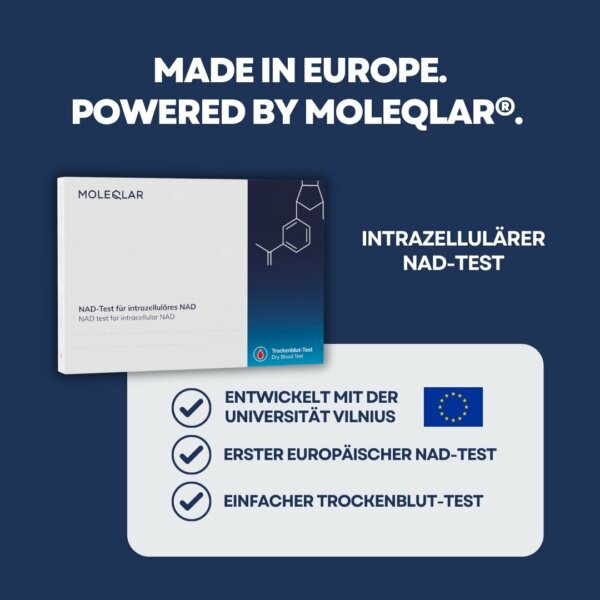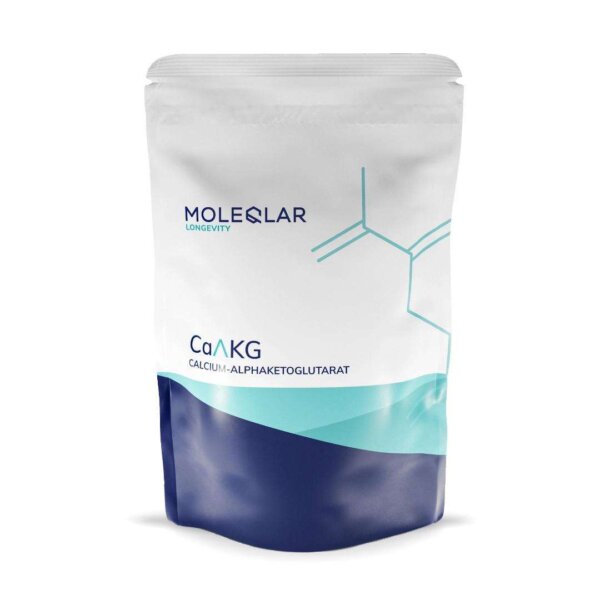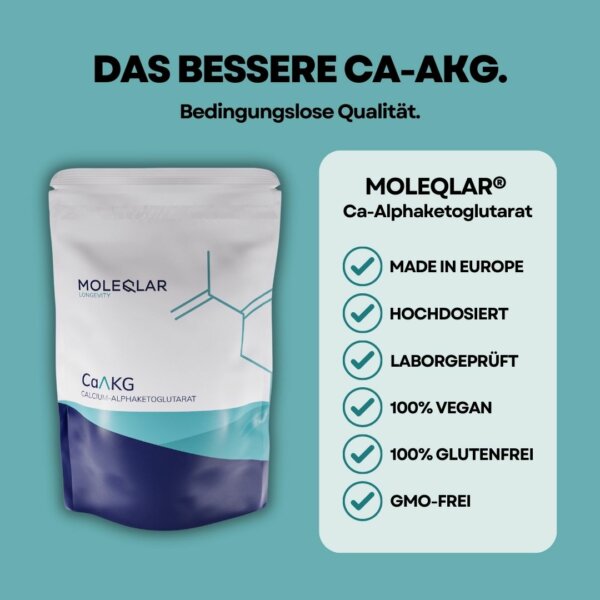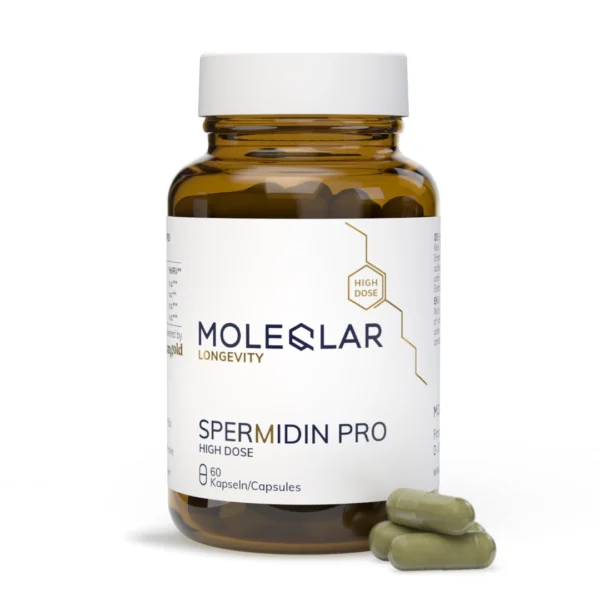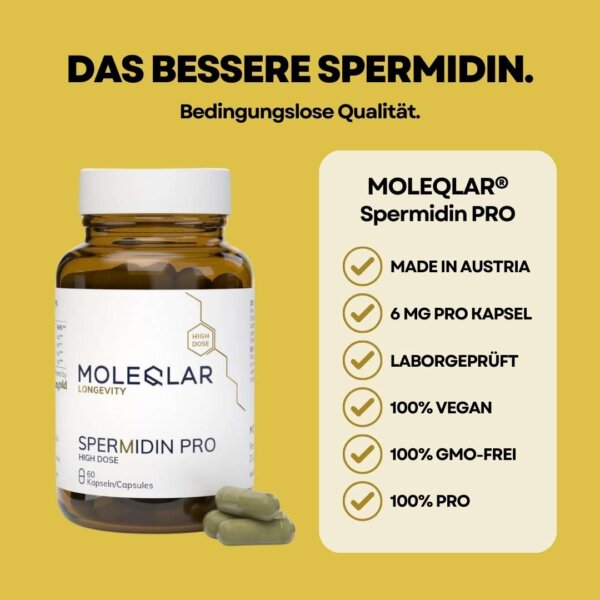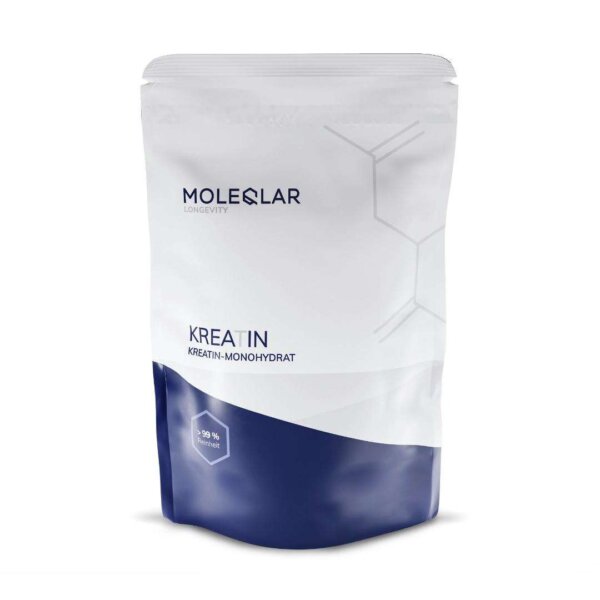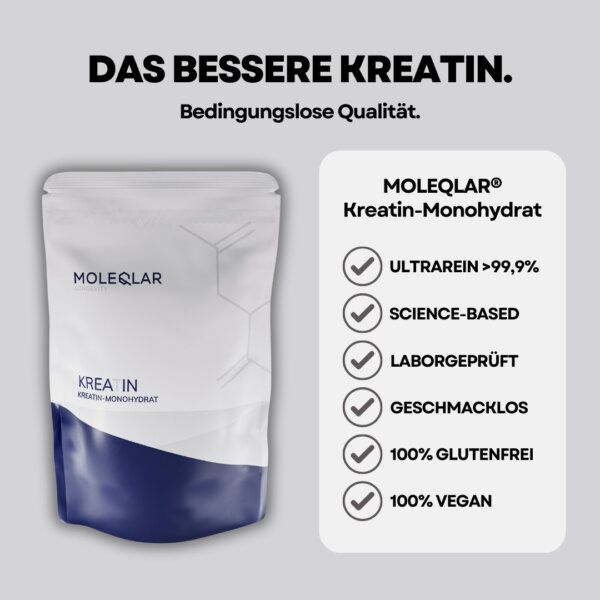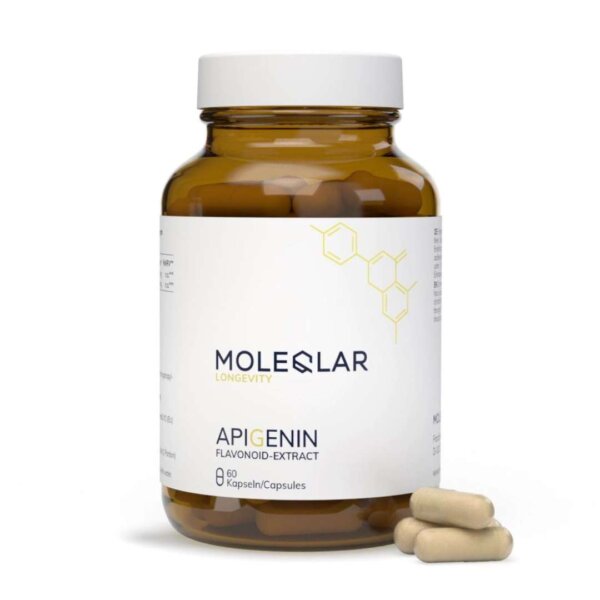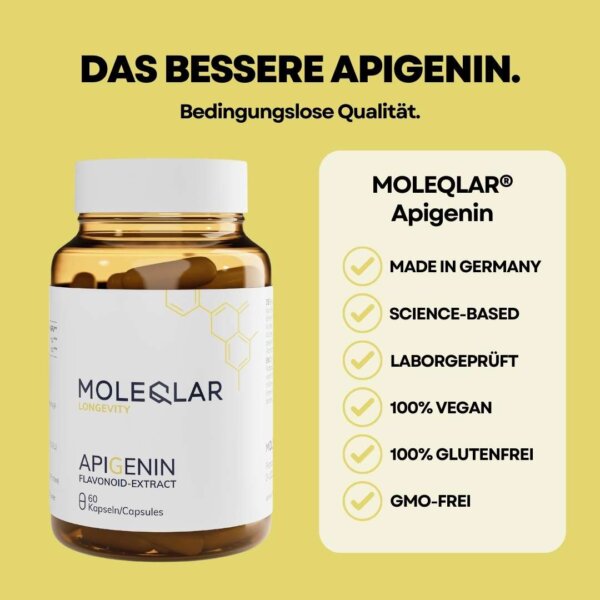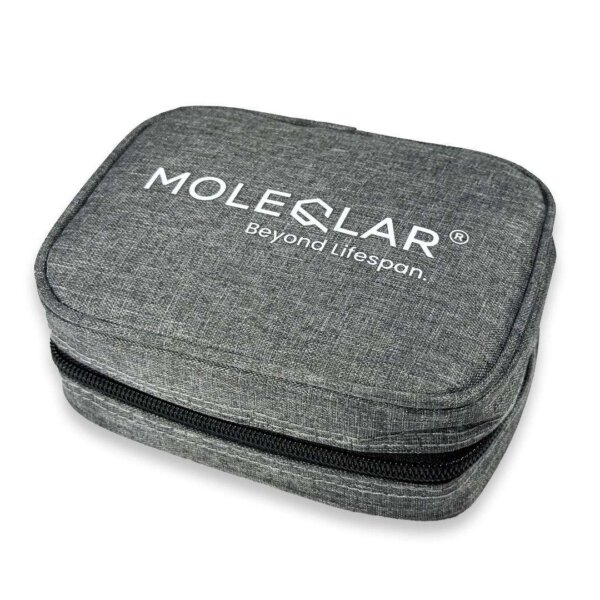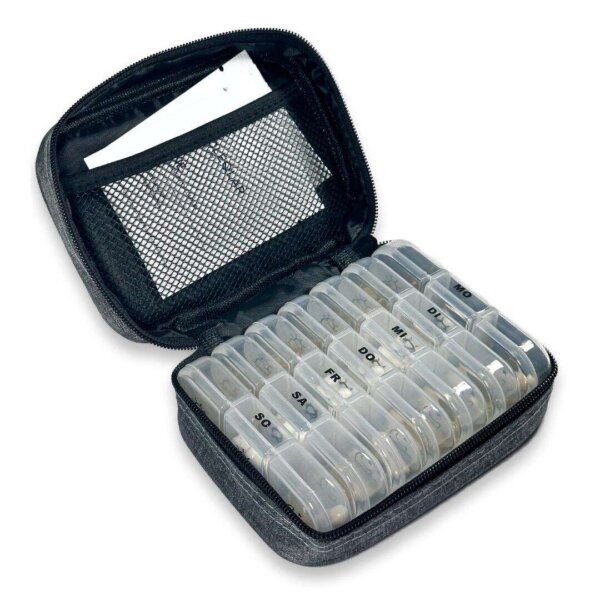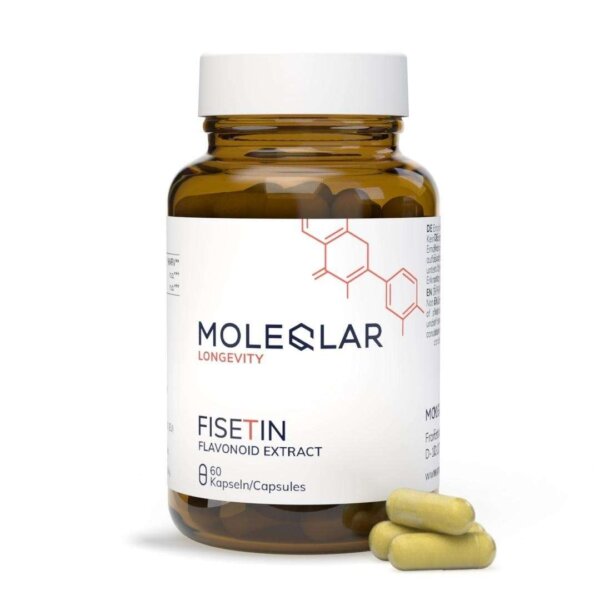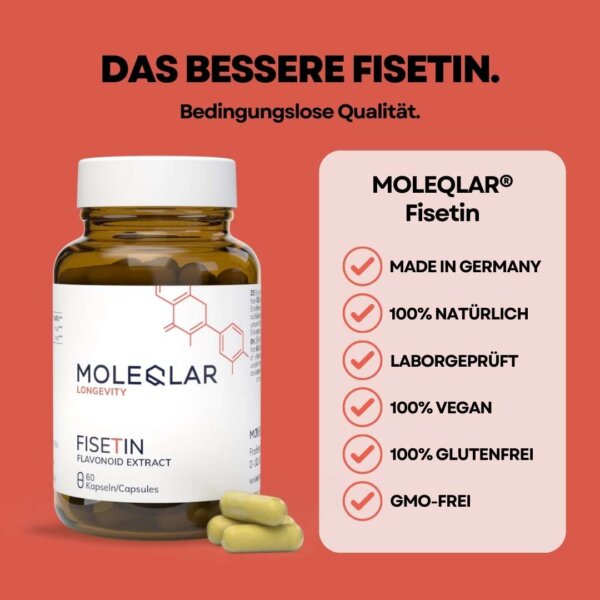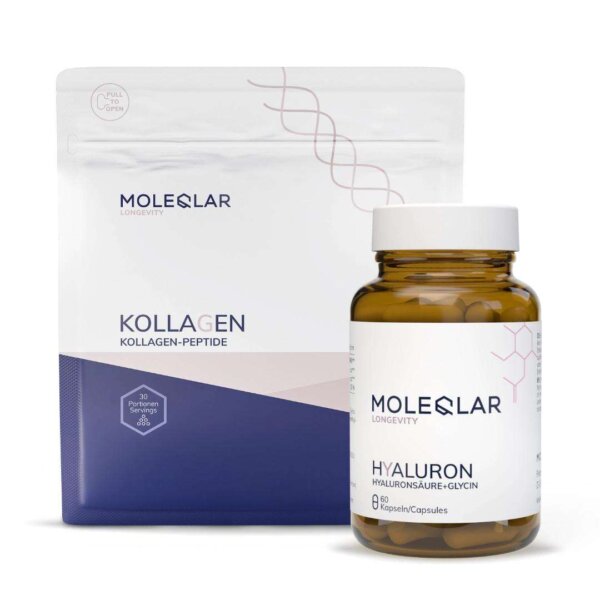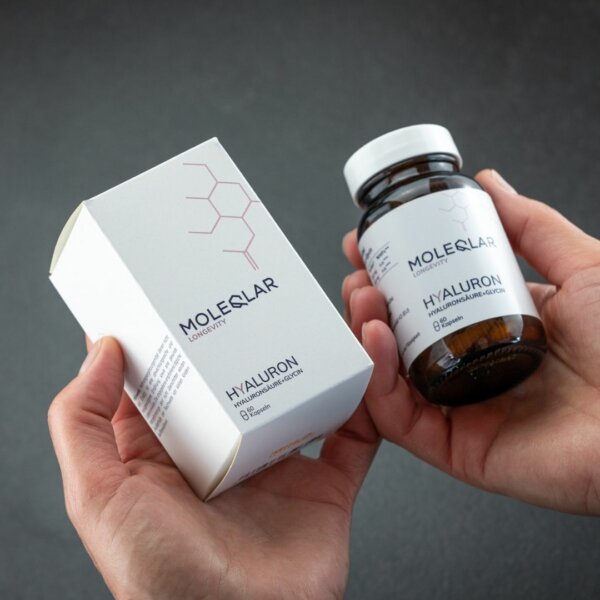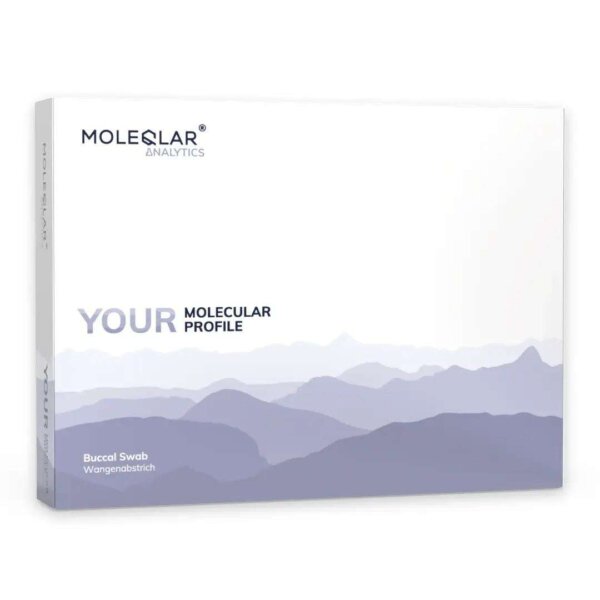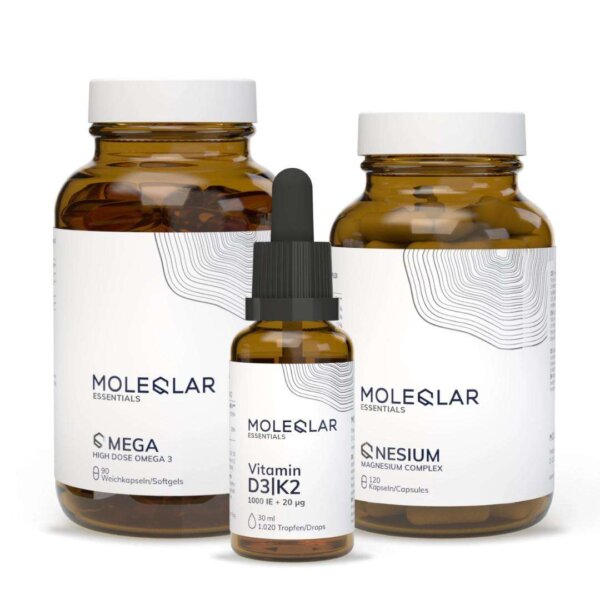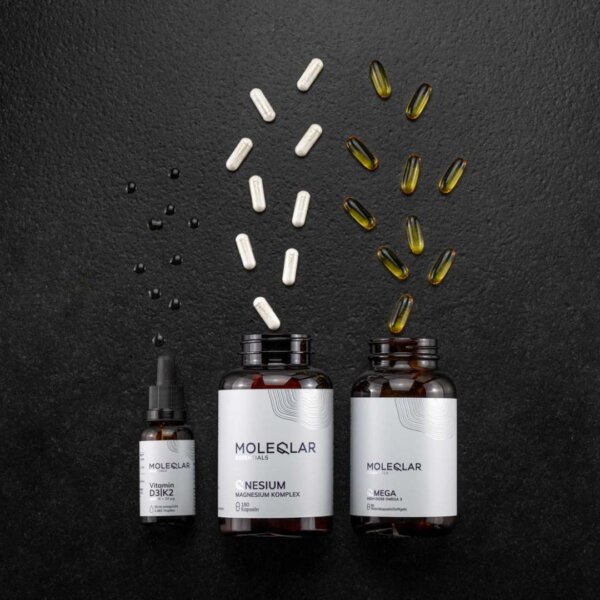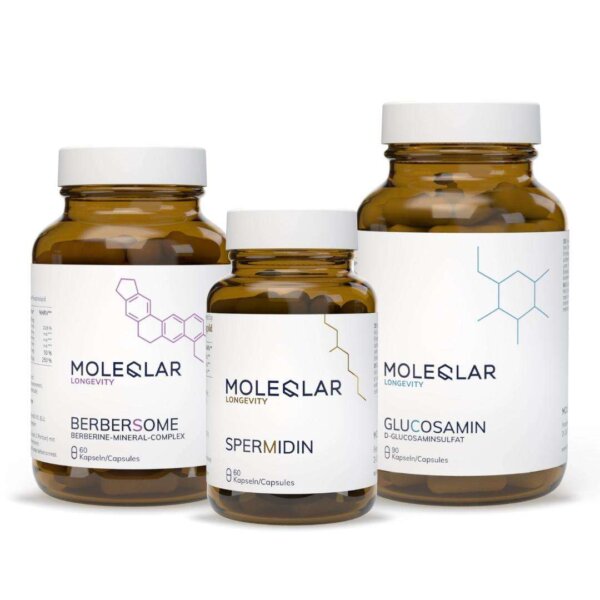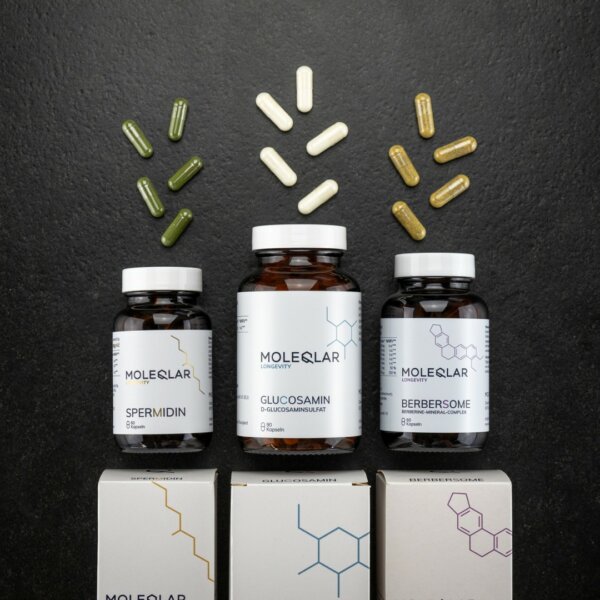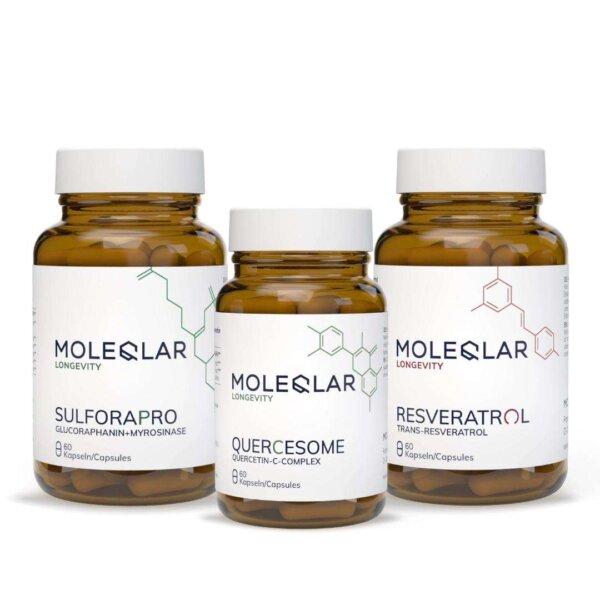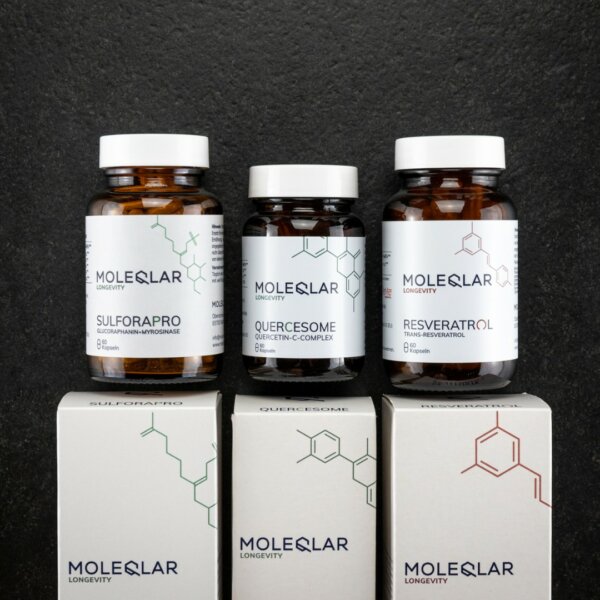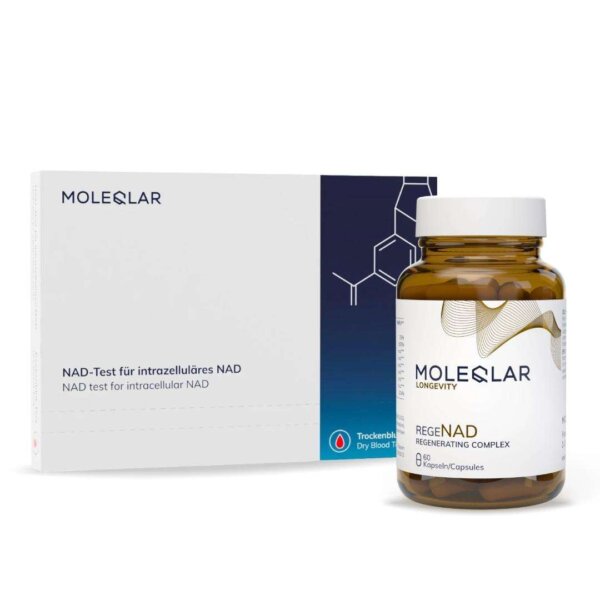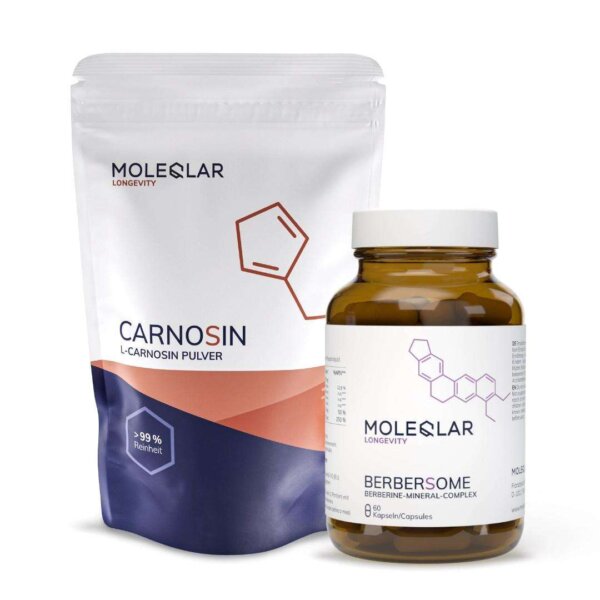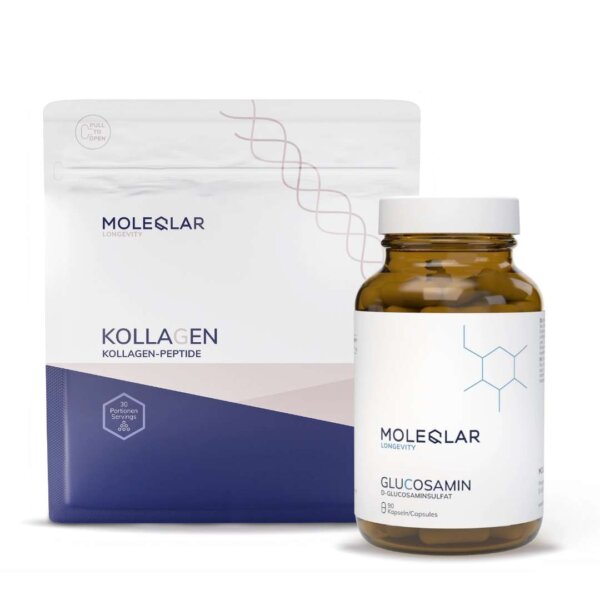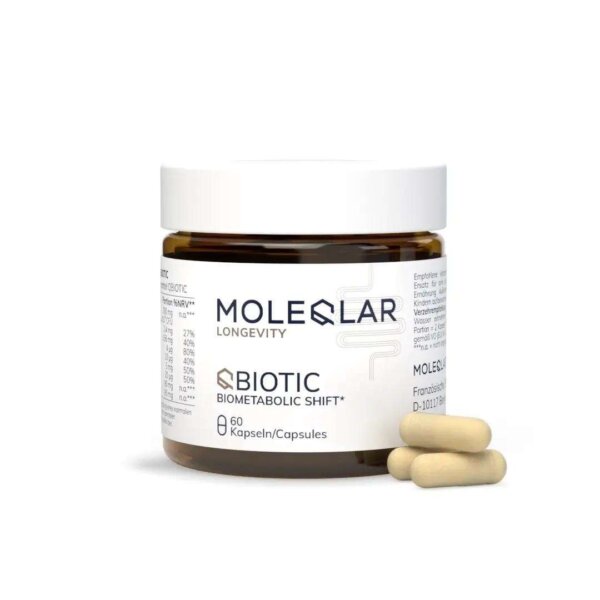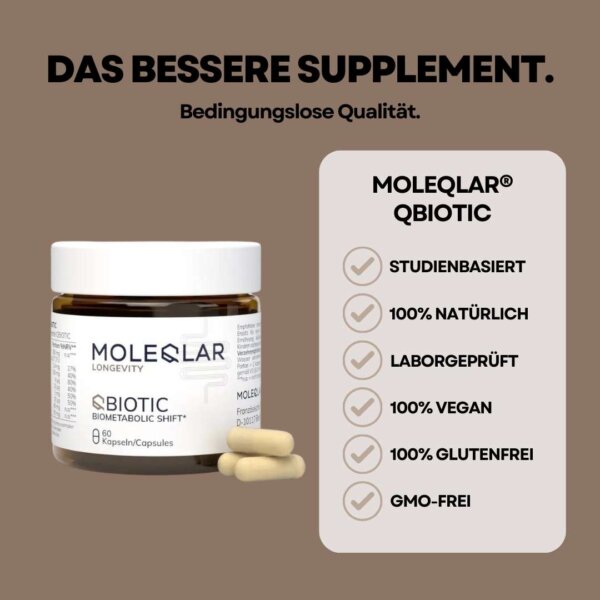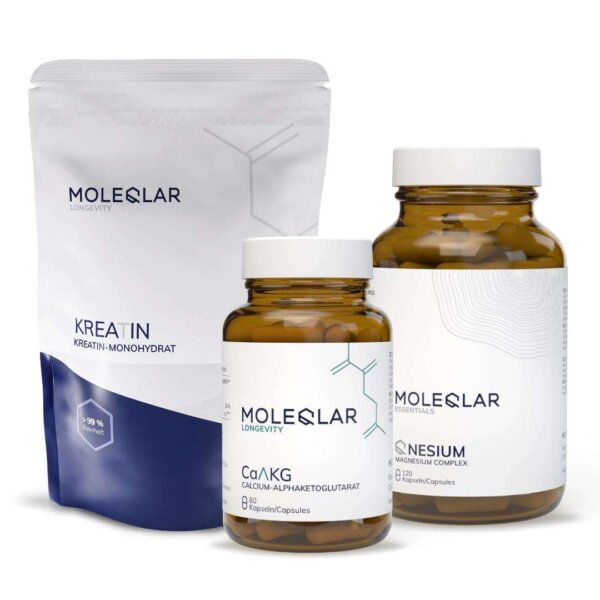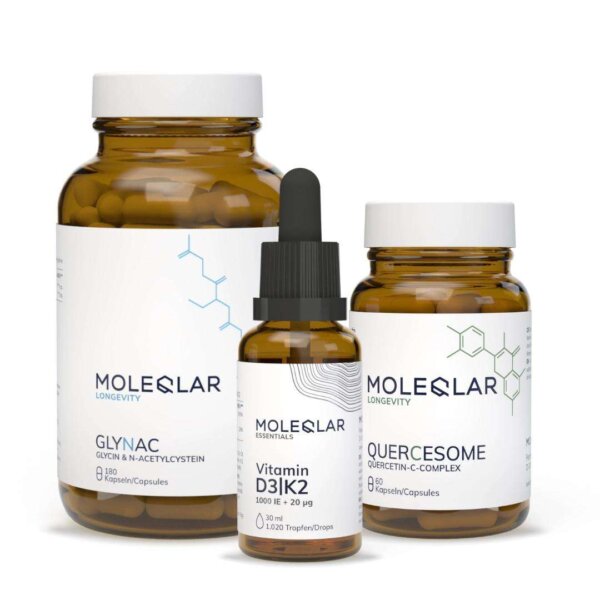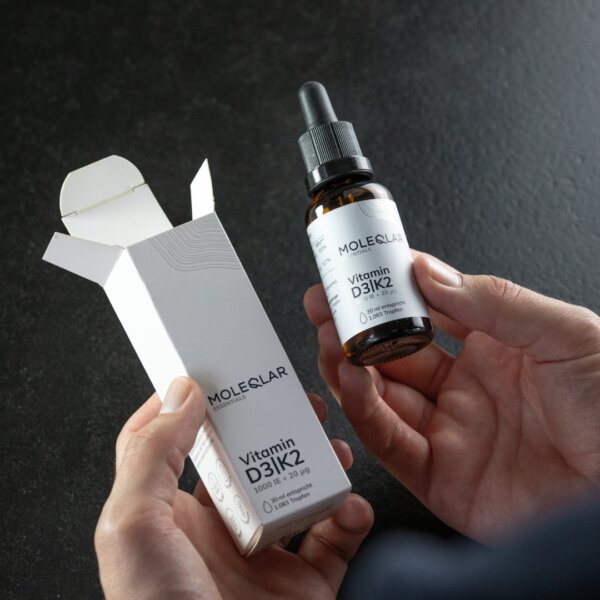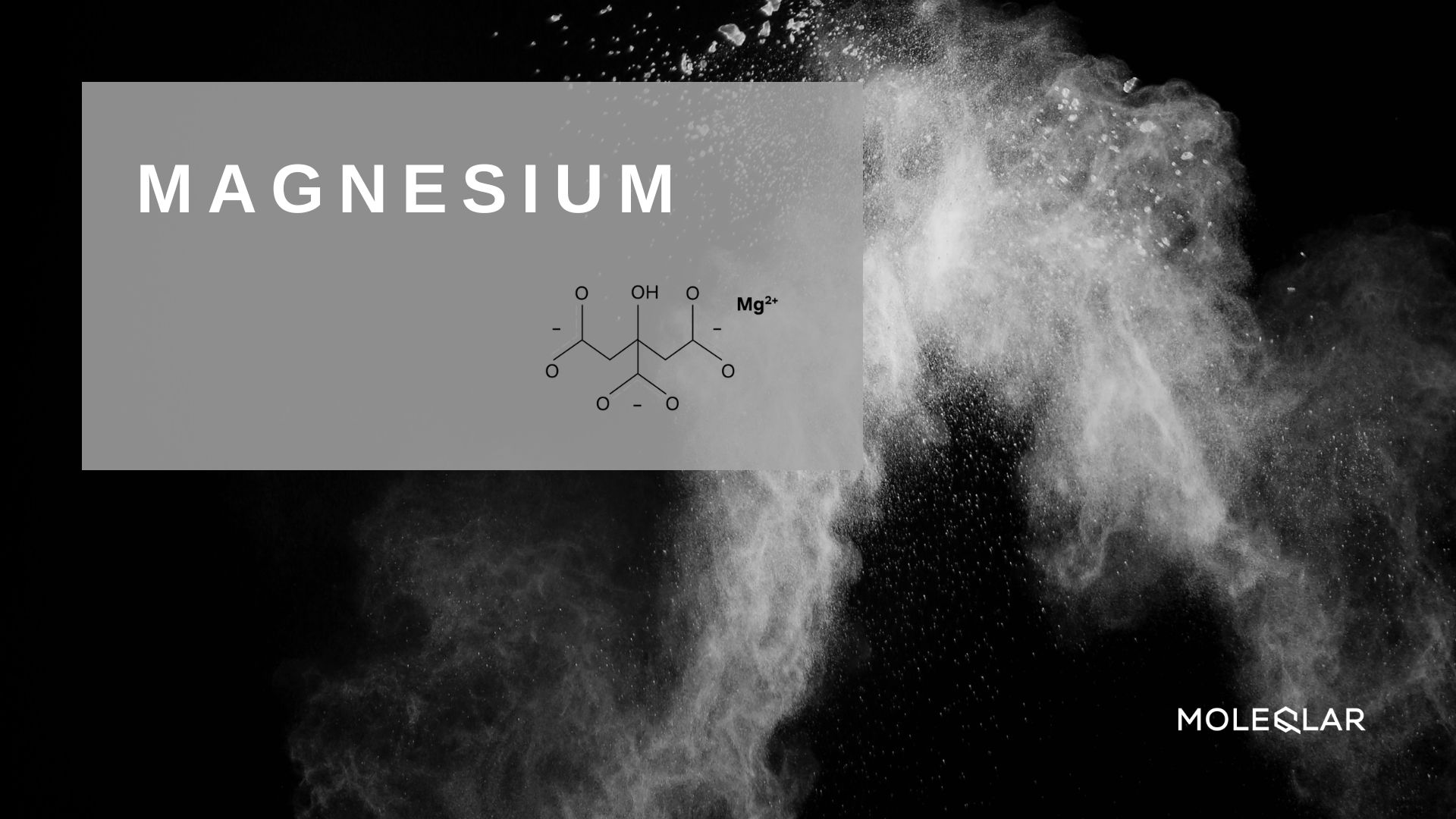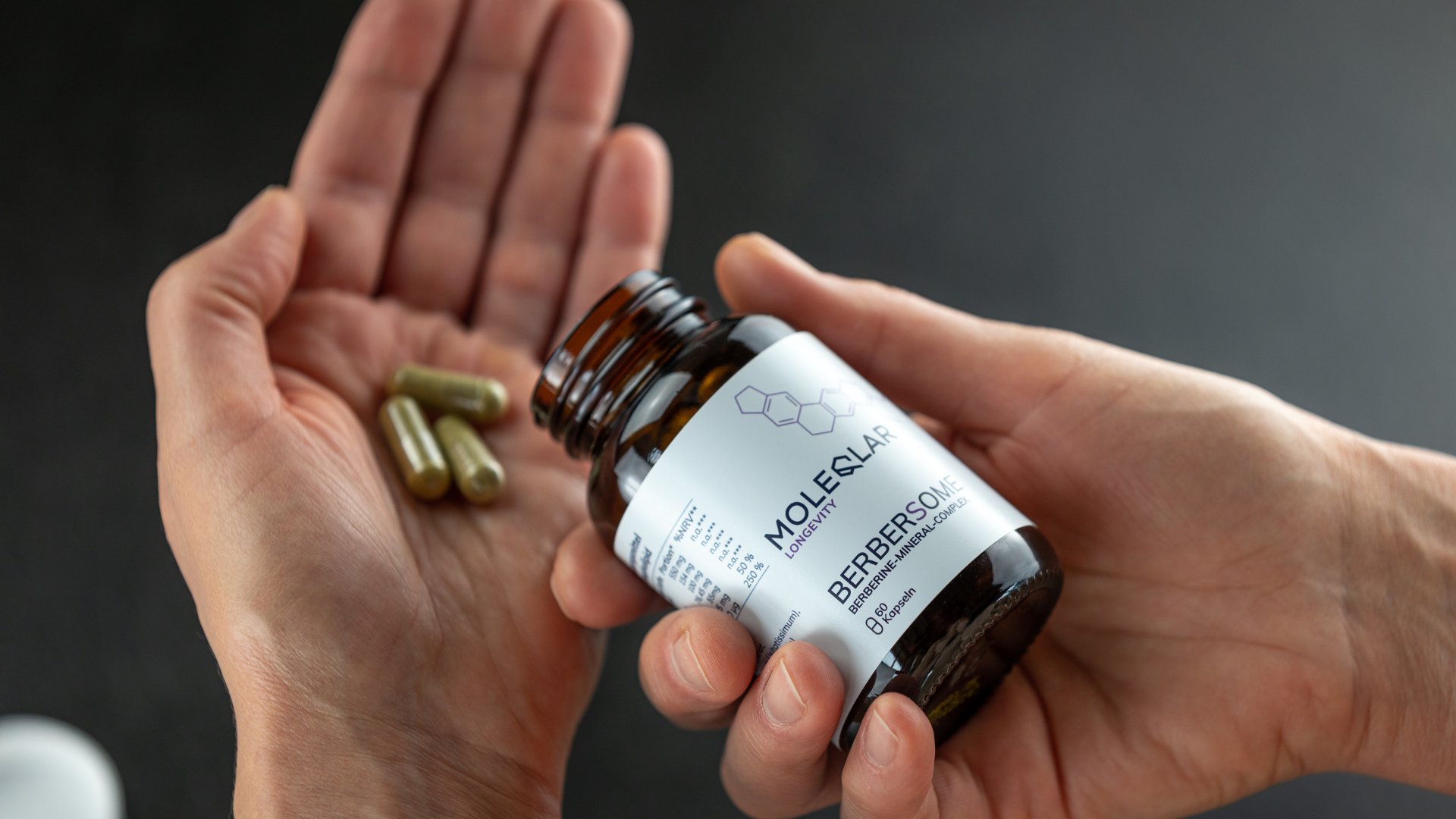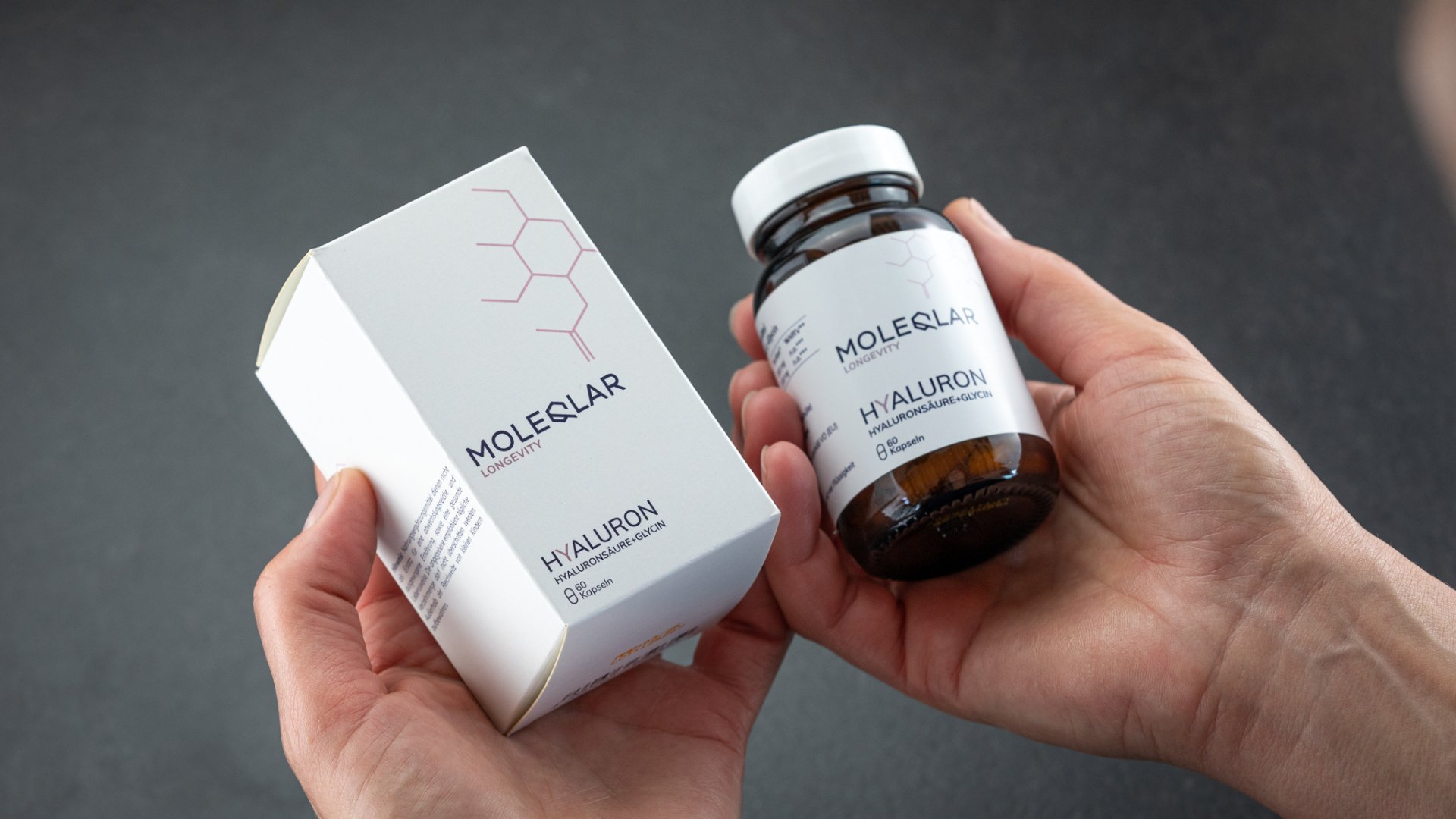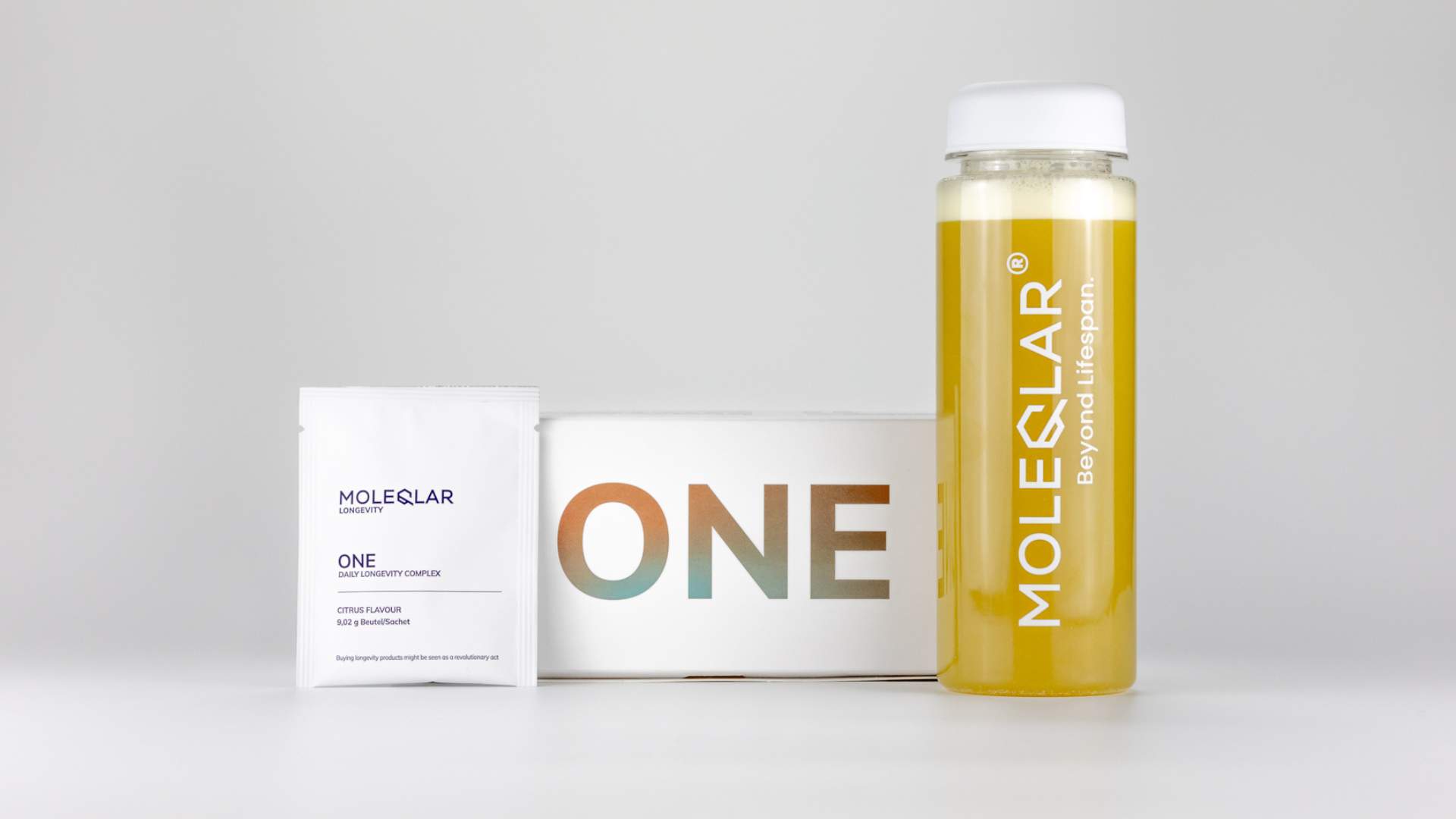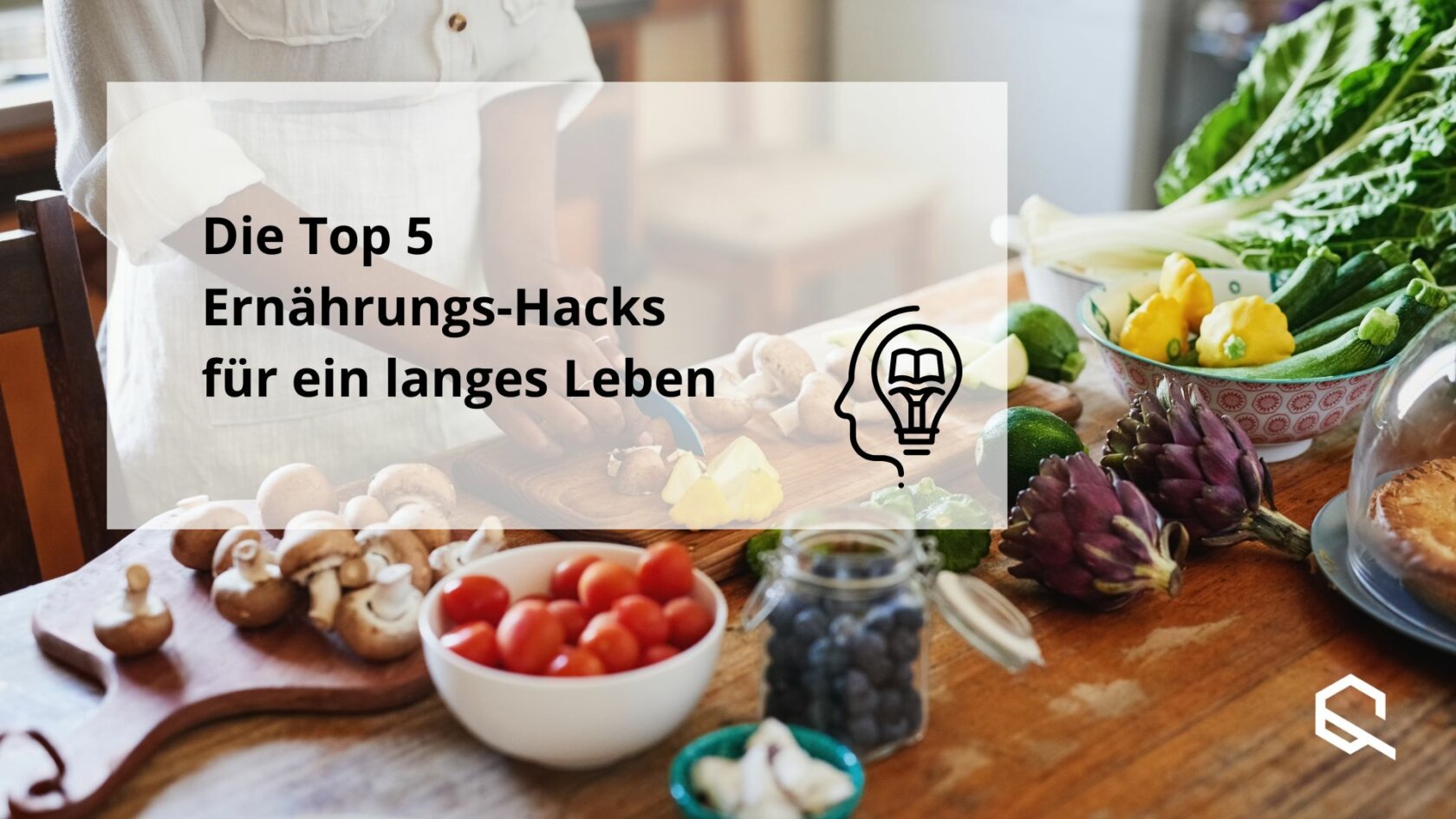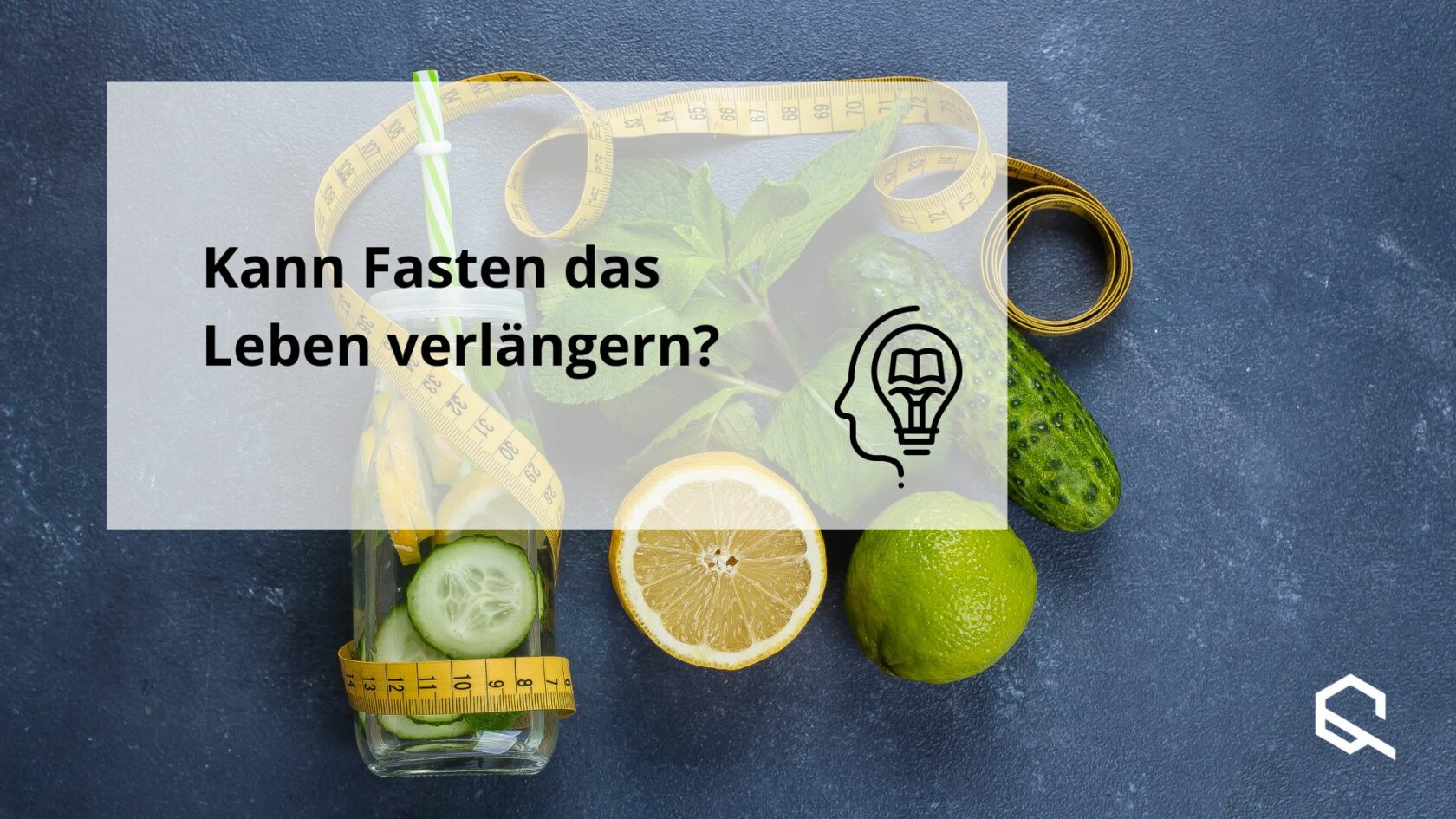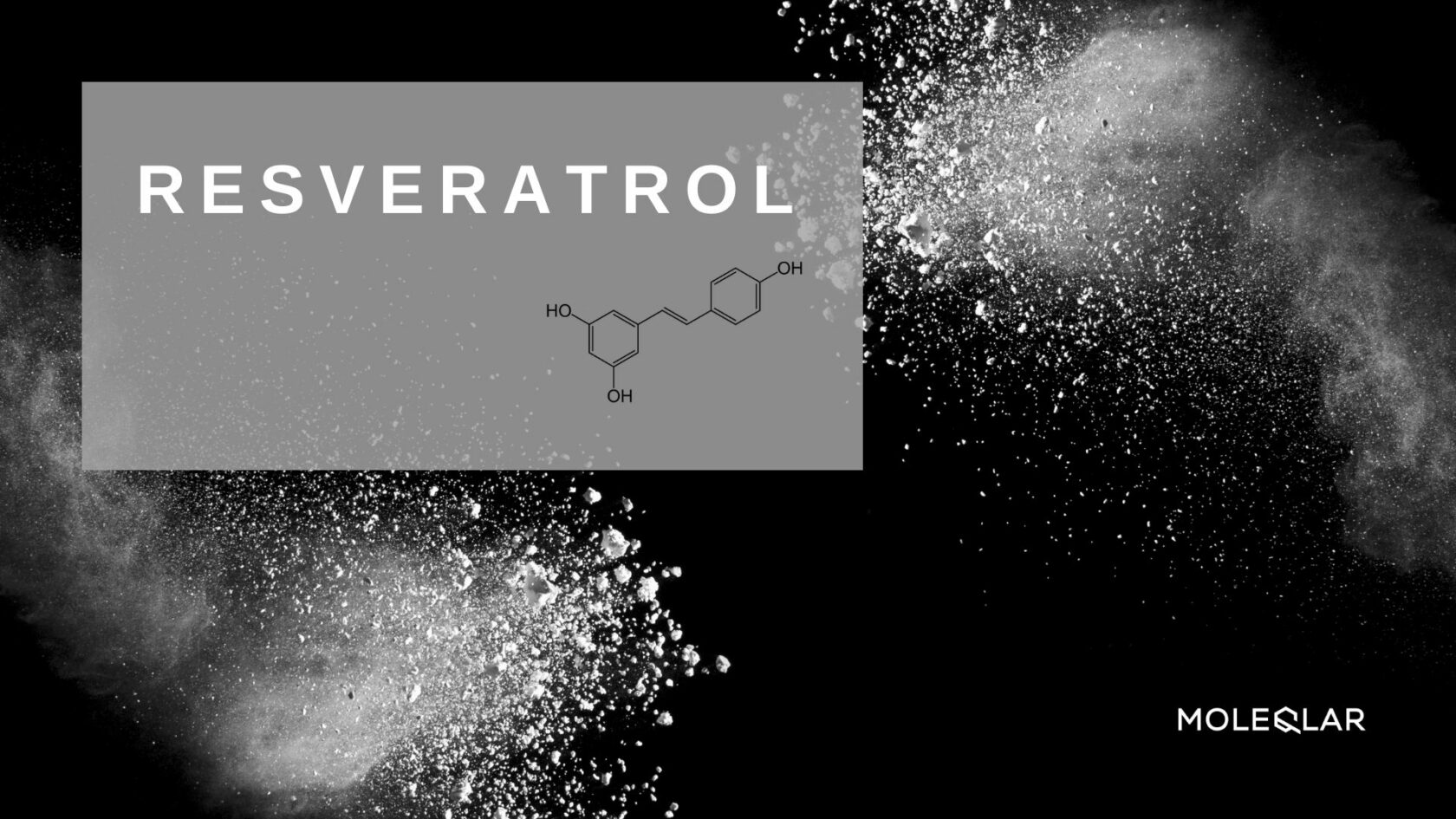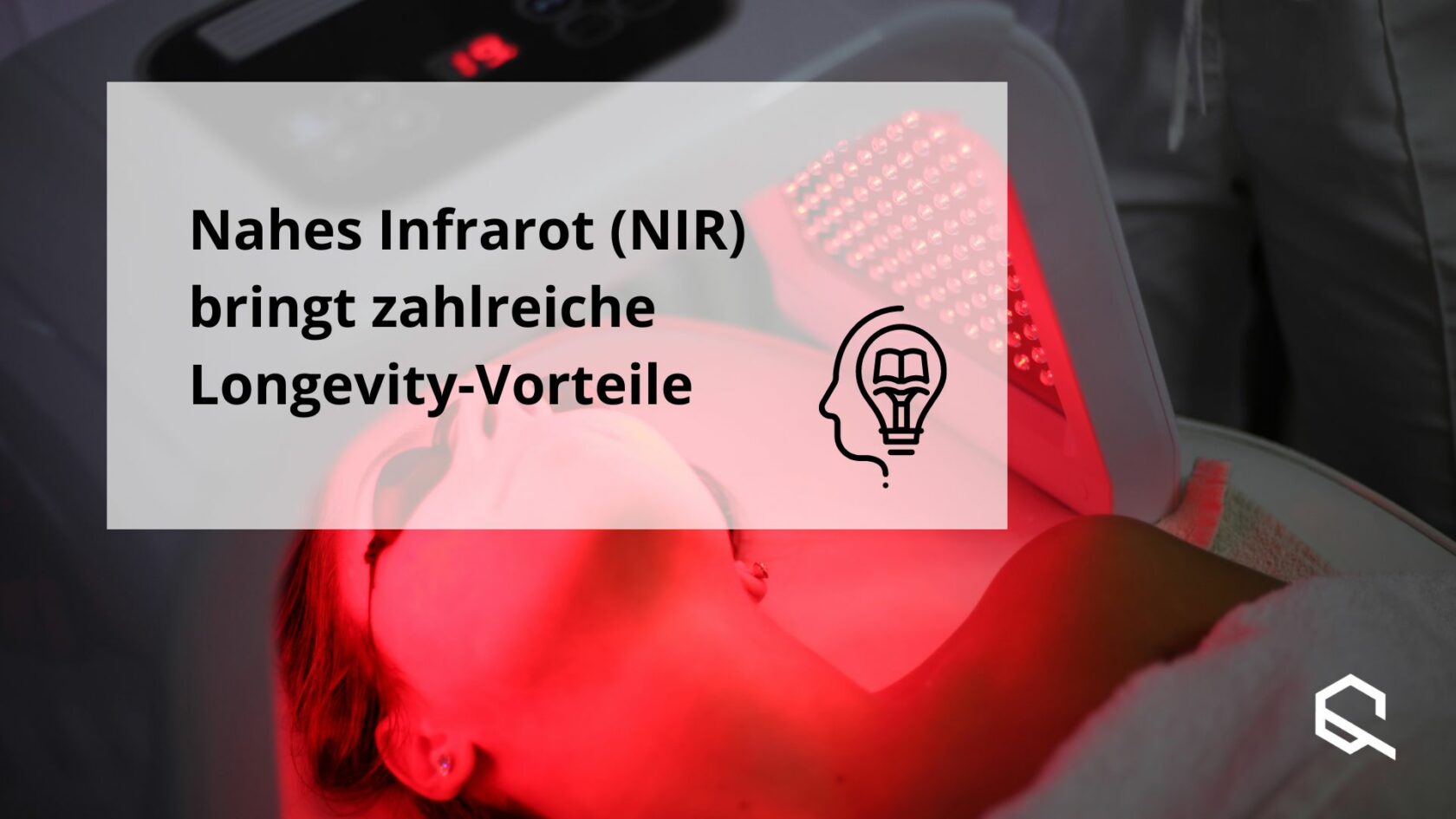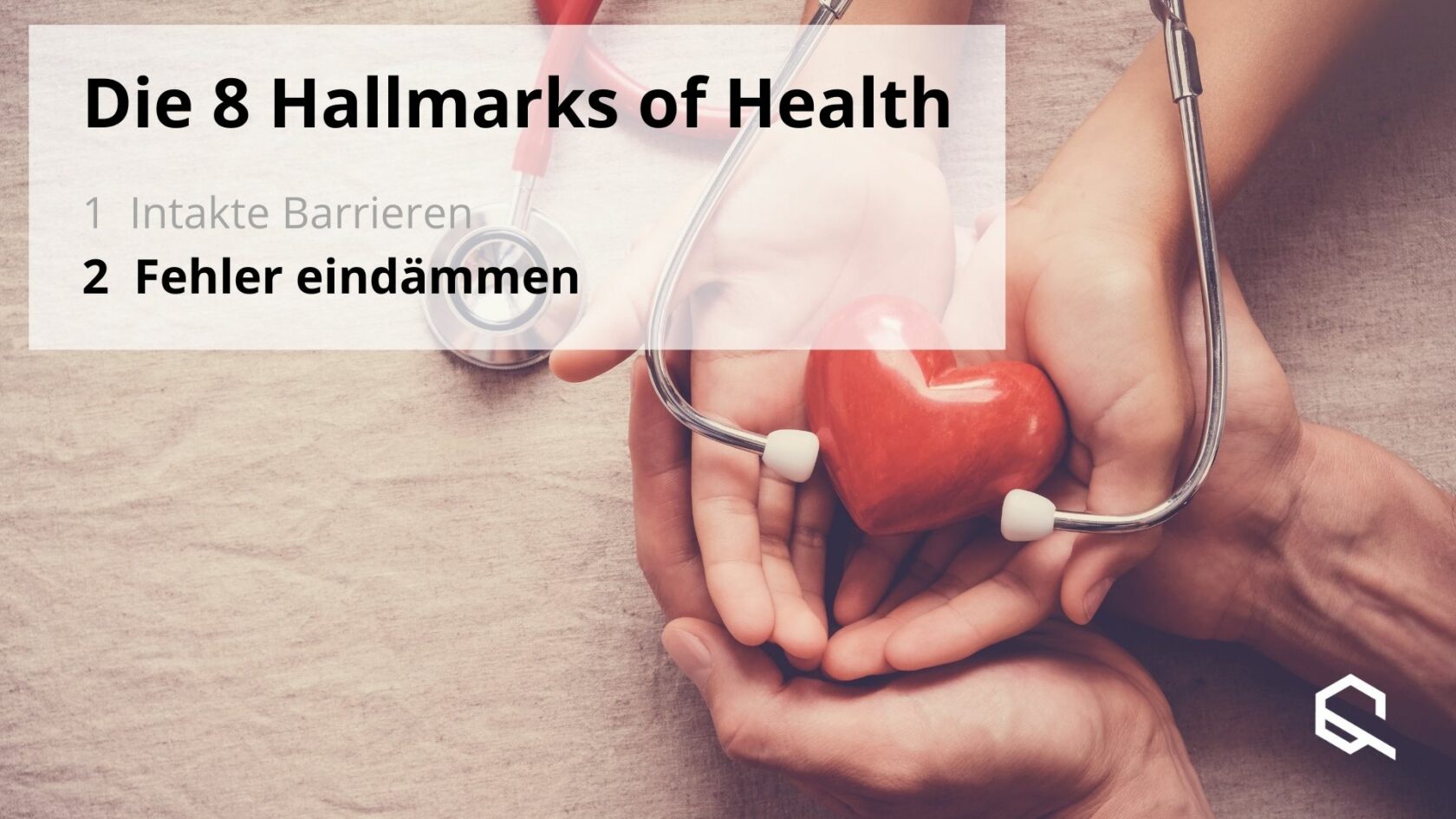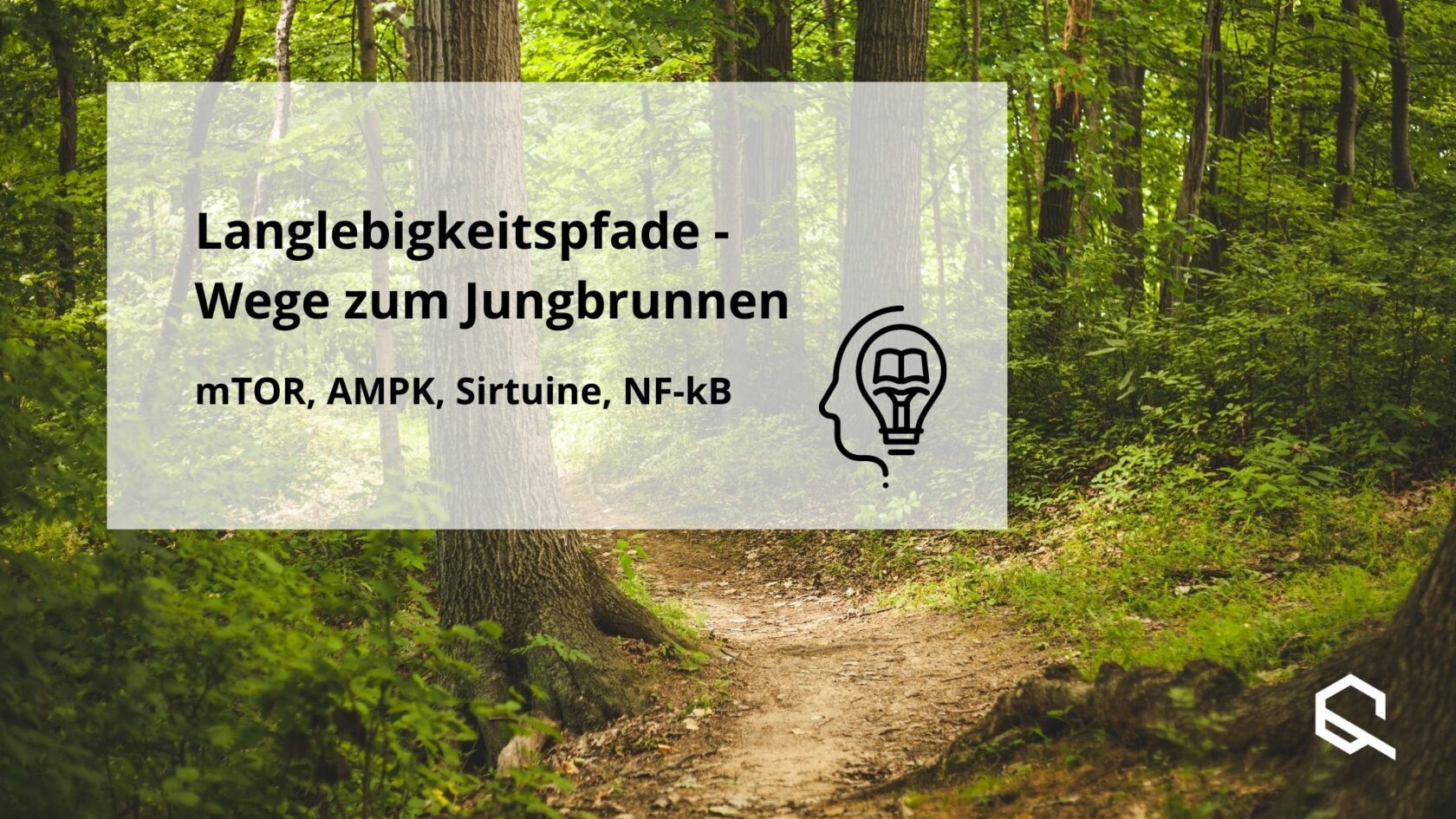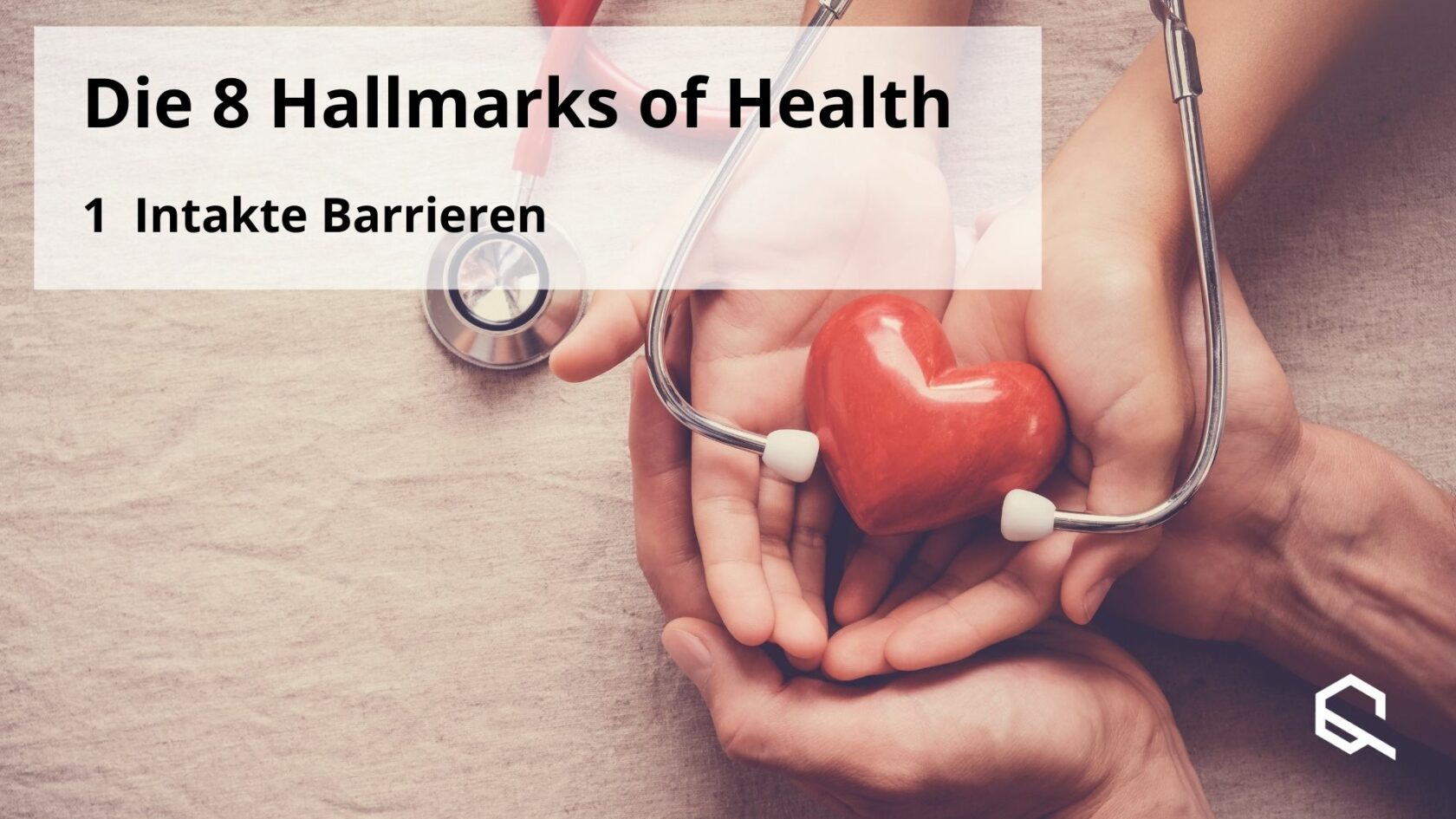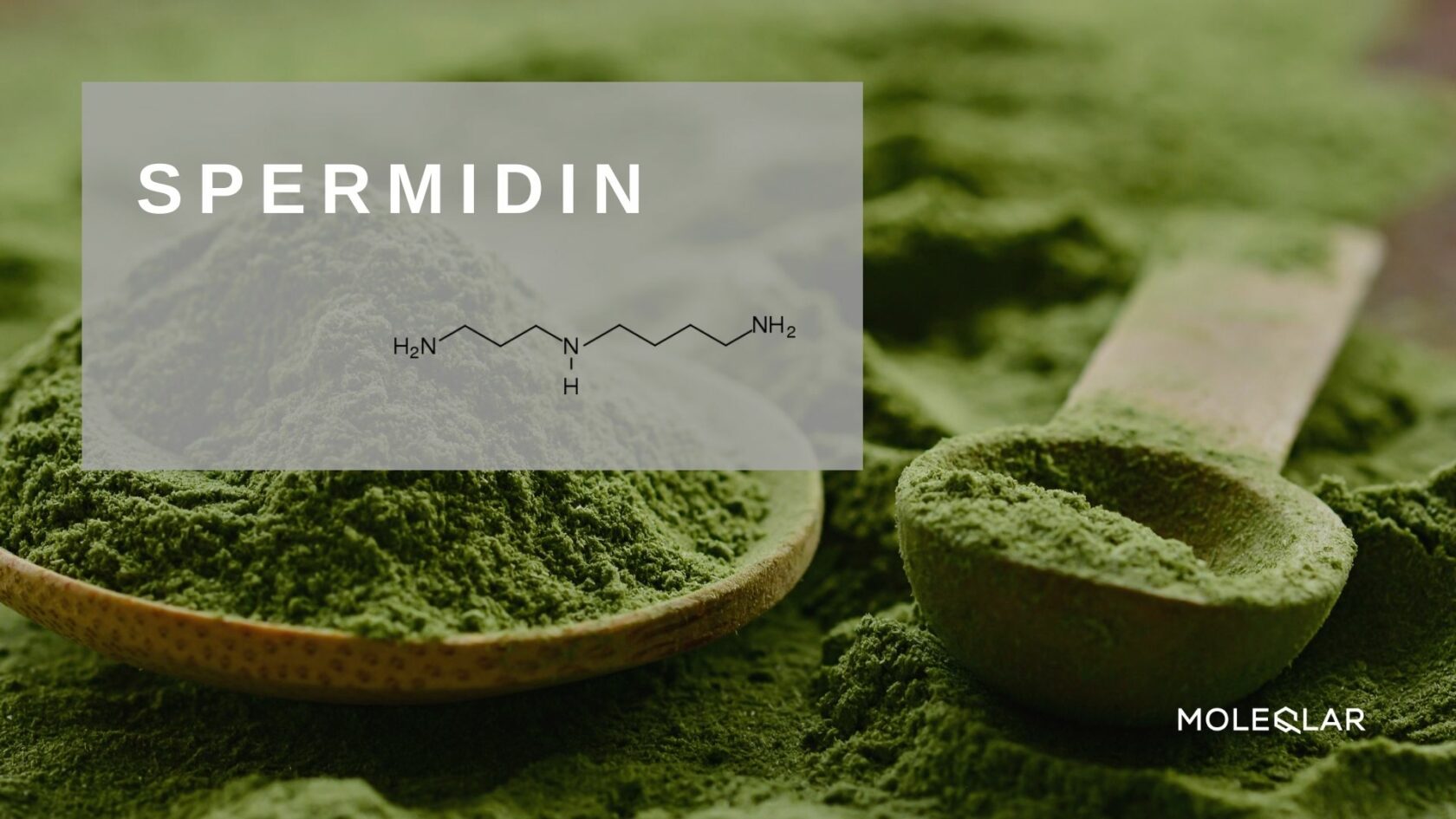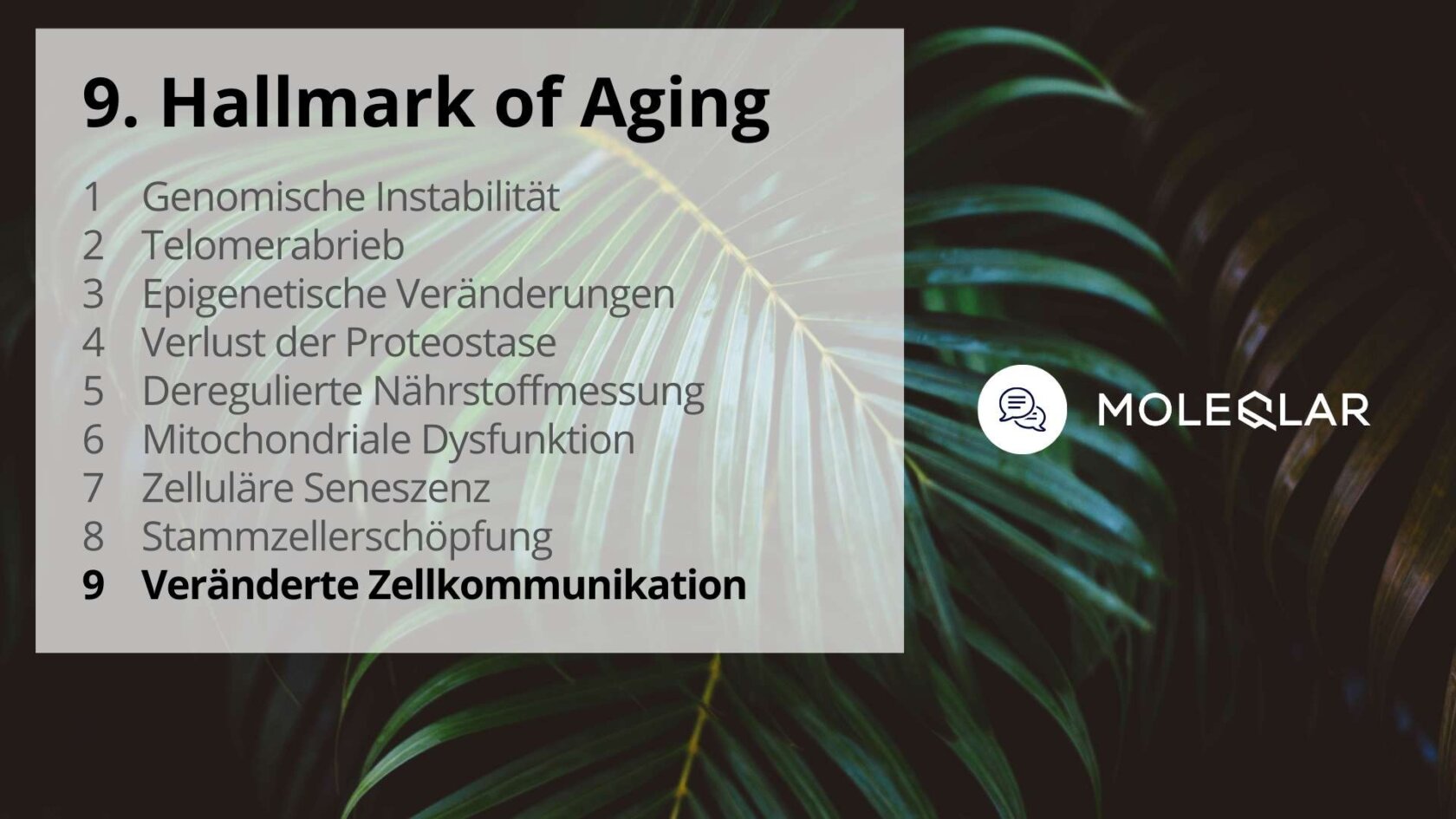Every day, our body breaks down the food we eat into its molecular components. This enables us to utilize the fats, carbohydrates and proteins. But all the secondary plant substances, minerals, vitamins and micronutrients also find their way into our body via the intestines. How exactly this works is complicated in detail. There are various absorption pathways to ensure that all molecules reach their site of action.
This article will give you a better understanding of why, for example, the bioavailability of magnesium varies between 4 and 80%, why we should add oil to certain phytochemicals, what bioavailability actually is and which absorption pathways exist in our body.
Absorption pathways - it all starts in the stomach
To give you a better idea of the different absorption pathways, let's look at an example together. Let's say you eat an apple. In your mouth, it is already broken up and mixed with the first digestive enzymes. Generally speaking, digestive enzymes are helpers that can break down food into smaller pieces. Amylase, for example, can cut the long-chain carbohydrate chains into shorter pieces.
But back to our apple. It now ends up chopped up in an acid bath - the stomach. In this harsh environment, as many germs as possible should be destroyed by the acid and the food further softened. But this is not the only task of the stomach. It also produces the intrinsic factor (IF). This protein is essential for us to absorb vitamin B12. Without the intrinsic factor, this would hardly be possible.
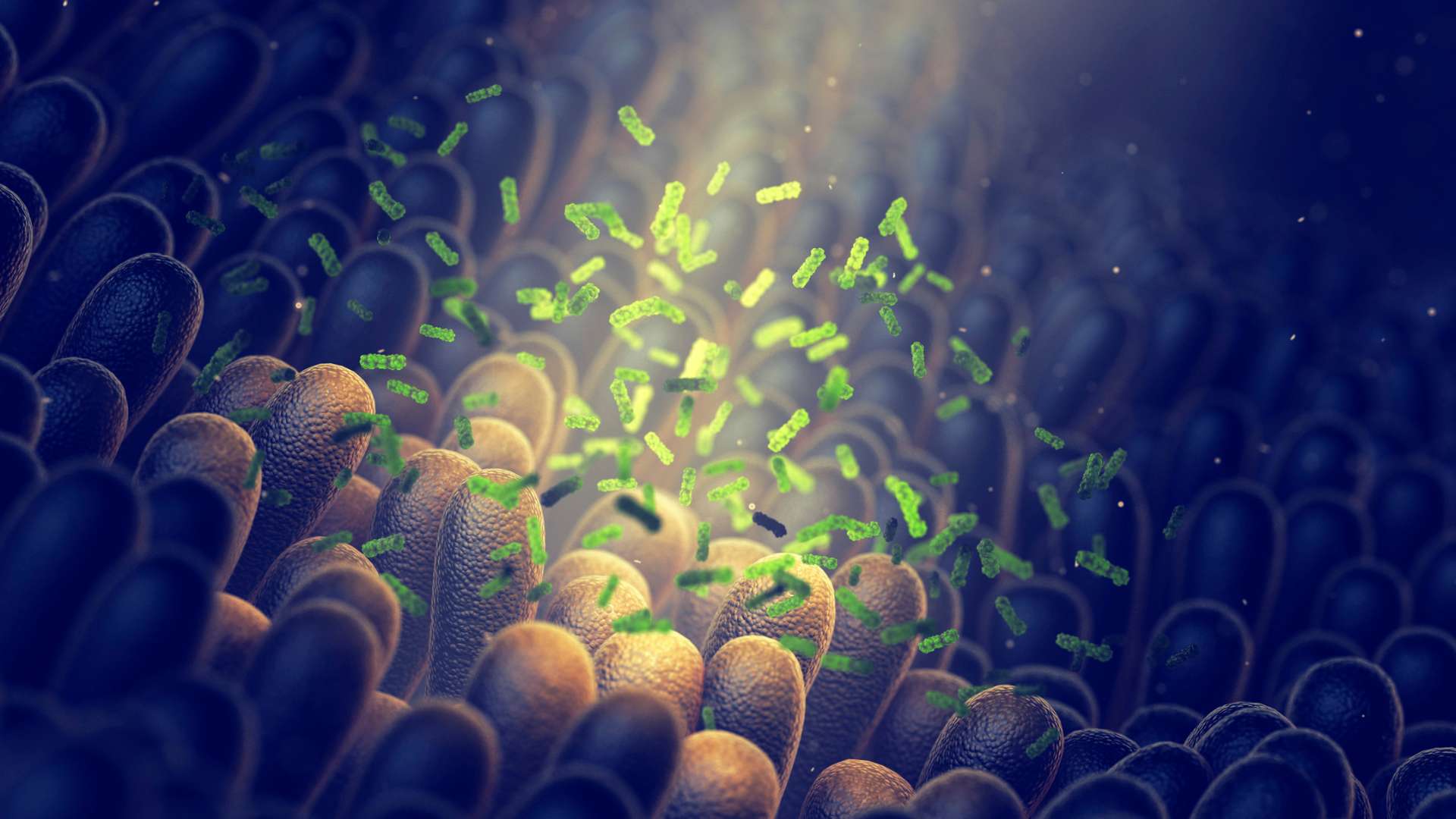
200m2gut for absorption
After our apple has already been digested by the stomach acid, it now goes into the duodenum, where bile and pancreatic juice also meet the chyme. Pancreatic secretions contain peptidases, which ensure that the proteins in our food are broken down into the individual amino acids.
Now that almost everything has been broken down, the crucial question remains. How can we absorb the remaining molecules?
The answer to this question is hidden in our small intestine. This is a fascinating evolutionary development. In an adult human, it is about 5m long and its surface area is more than 200m2, which is slightly less than an entire tennis court.
A lot of transporters are distributed over this huge surface area, which help us to absorb all the important components from our food. For example, our intestinal cells have a special transporter to absorb iron ions. We need these for the red pigment in our blood, haemoglobin. However, we can also absorb iron (in the form of haemoglobin) via the haem transporter, which is contained in meat.
First pass effect - the liver is in charge here
We have overcome the first hurdle. Our molecules have made the step from the food, via the intestine, into our body. They now reach the liver via the portal vein - a vessel that collects all the blood from the digestive tract. It serves as the first detoxification point in the body.
All nutrients that are absorbed via the intestine must first pass through the liver, where they are processed by the liver cells. The molecules are processed via various biochemical processes - and this has consequences for the further course of the disease. In medicine, this phenomenon is known as the first pass effect .
Perhaps an example here will help you to better understand the significance of the first pass effect. Various forms of opioids are used in medicine. This class of drugs binds to the opioid receptors and thus provides strong pain relief. However, there is one opioid derivative that is not used for pain, but for diarrhea. Loperamide. This binds to the enterocytes (intestinal cells) in the intestine and thus ensures slower intestinal transit. However, like all other medications, it also enters the bloodstream, where it is eliminated in the liver at a rate of over 99% and therefore has hardly any effect on the rest of the body.
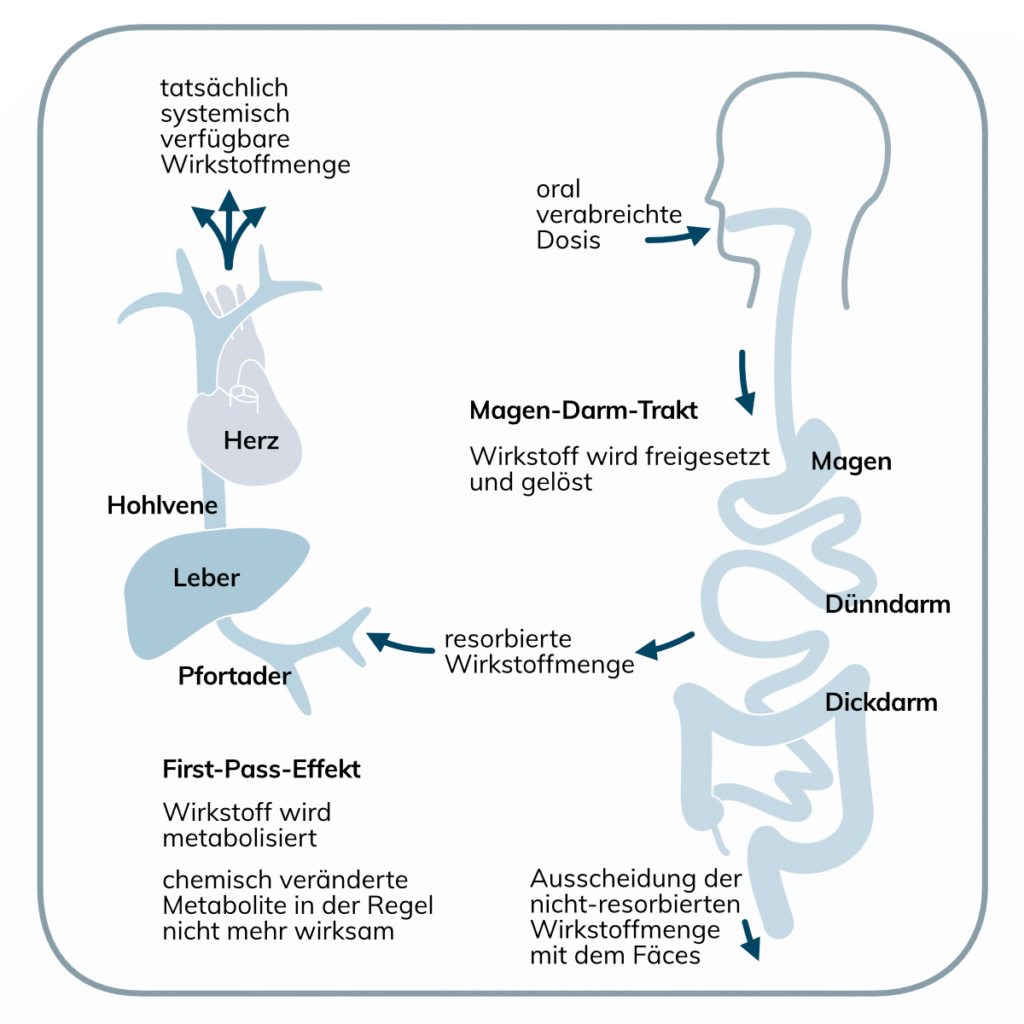
Parenteral, sublingual, buccal and co. - who is who?
Our liver is therefore a kind of upstream protective shield. Before a molecule reaches the brain or the heart, it has to pass the "entry check" in the liver. This makes perfect sense from an evolutionary point of view, but is sometimes a hindrance in medicine. This first pass effect can be partially circumvented by increasing the concentration of the starting substance so that the liver does not manage to "detoxify" all the molecules. However, this is often associated with some side effects.
In this case, it is somewhat more elegant to change the mode of administration. Instead of via the mouth, there are other parenteral (in addition to intestinal) absorption routes available. If it has to be done quickly, drugs can be administered buccally (via the buccal mucosa) or sublingually (under the tongue). These are mainly painkillers that are dissolved in the mouth or under the tongue. These molecules reach the heart directly via the blood vessels. The liver is thus bypassed. To help you better understand the pathways, we have provided you with a diagram.
This works in a very similar way with suppositories. The blood from the rectum no longer reaches the liver, but goes directly to the heart via the inferior vena cava. This is a popular method, especially for children, to channel active ingredients past the liver.
You are probably familiar with the last method from the hospital. We can also administer medication directly via the vein. This also bypasses the liver and the first-pass effect.
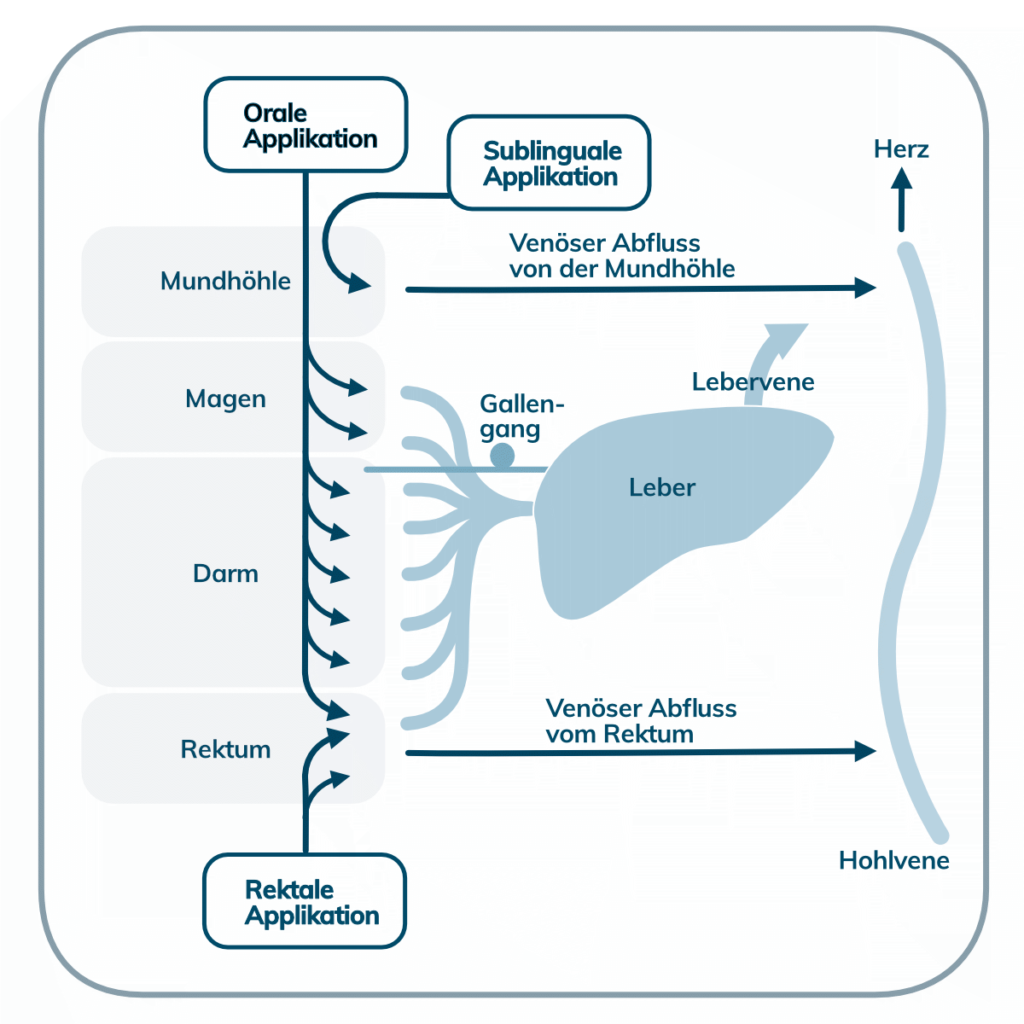
Liposomal vs. hydrophilic
We have now made it into the bloodstream, but there are still more hurdles to overcome. In principle, we can distinguish between molecules that are fat-soluble (lipophilic), such as vitamins A, D, E and K, and water-soluble ones, such as vitamin C. Water-soluble substances can be easily transported in the blood, but find it more difficult to enter the cells. The opposite is true for fat-soluble substances. In the blood, they often require special transport proteins, which makes it easier for them to pass through the phospholipid layer of the cells.
When we talk about blood lipids, these fat particles are not floating around freely in the blood, but are bound to transport proteins such as apolipoprotein B. This means that these blood lipids can be made water-soluble. This means that these blood lipids can be made water-soluble. If you want to find out more about this and which blood lipid levels are important for your longevity, please read our article on the subject.
Bioavailability using the example of magnesium
Not everything we eat ends up in our blood in exactly the same way. Roughly speaking, this is how bioavailability can be described. You measure the concentration of the substance in the blood plasma (after it has passed through the liver) and compare it with the initial concentration. This can result in considerable differences.
A good example is magnesium. This occurs naturally in various compound forms, such as magnesium oxide, magnesium citrate or magnesium bisglycinate. The bioavailability of magnesium differs enormously between these compounds.
The well-known magnesium oxide has a bioavailability of just 4%! This means that although this form is quite suitable for constipation, other forms are much more effective for supplementing magnesium. Magnesium citrate and magnesium bisglycinate, for example, are both absorbed by our body at 80%. Magnesium bisglycinate can also enter the brain via the blood-brain barrier.
Secondary plant substances - the difficulty with bioavailability
Secondary plant substances have a range of health benefits. We have already given you an overview in a separate article.
The problem with phytochemicals is their concentration. Large quantities of the pure substance are used in studies. For example, to obtain the amount of quercetin used there, we would need up to 100 apples a day. With resveratrol it is 12 liters of red wine, depending on the study, and for sulforaphane it would be up to 40 kg of broccoli - all per day.
Some of the secondary plant substances, such as resveratrol or quercetin, are fat-soluble. As a result, we are less able to absorb them for the reasons mentioned above and their bioavailability is low. To avoid this, we can pack the molecules in a phospholipid layer and thus increase their bioavailability many times over.
With the blood sugar-lowering berberine this formulation can increase bioavailability by a factor of 10 and for quercetin by a factor of 20! This is made possible on the one hand by the combination of a lipid layer and on the other hand by the addition of adjuvants, i.e. molecules that can help with absorption. In the case of quercetin this is vitamin C and in the case of berberine a mineral complex.
Absorption of phytochemicals - the devil is in the detail
Not only quercetin and berberine need a little help to increase bioavailability, but also the sulforaphane. In the green vegetable, this anti-inflammatory molecule is still present in its precursor, glucoraphanin. This is converted into sulforaphane in our intestines with the help of the enzyme myrosinase. However, the efficiency is not very high - it is around 10% and usually even less, as the individual substances are washed out by cooking for too long, for example.
For this reason, Sulforapro contains both glucoraphanin and myrosinase. And there is another trick to ensure that the active ingredient arrives exactly where it is needed. In the intestine. The magic word here is: gastro-resistant capsules .
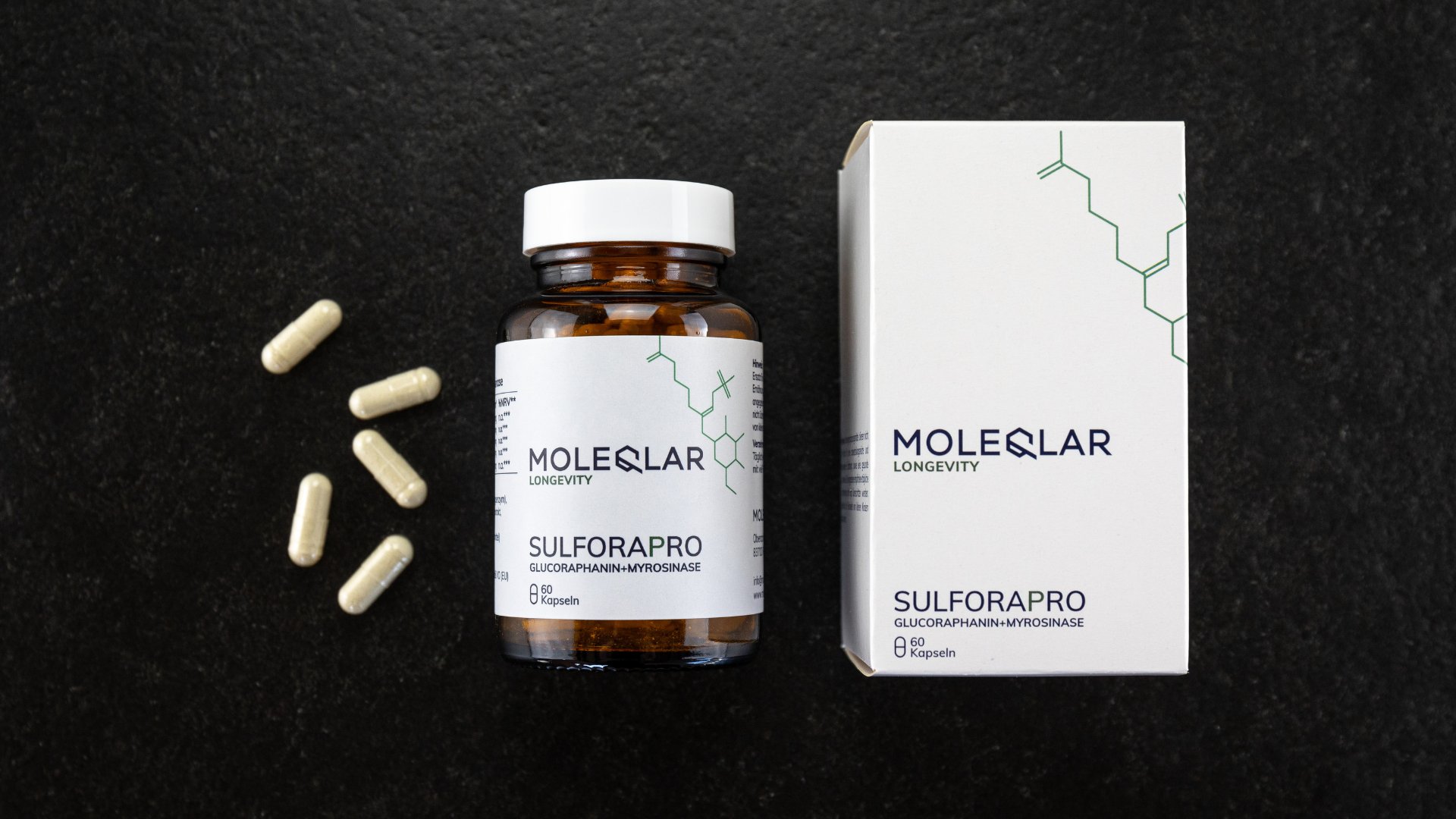
It's all about the right size
The molecules we consume every day all come in very different sizes. Some of them are too large to be absorbed directly - e.g. collagen and hyaluron, both important molecules for skin health. These substances form long molecular chains that cannot be absorbed by our body. So if we want to consume collagen or hyaluron through food, we have to pack the molecules into smaller packages, so-called peptide shells. These contain pieces of the original substance that have already been broken down. This is where it gets a little complicated.
In the case of collagen, studies have shown that it is advantageous if the fragments in the peptide shells are as small as possible. The opposite is true for hyaluron. Larger fragments, so-called high-molecular hyaluron, showed better results in human studies.
Conclusion on absorption paths
The path from food to our cells is not always as simple as we imagine. Fat-soluble and water-soluble molecules are absorbed differently. The liver metabolizes many molecules before they even reach the bloodstream, and the bioavailability of substances depends on their composition.
Literature
- Vertzoni, Maria et al. "Impact of regional differences along the gastrointestinal tract of healthy adults on oral drug absorption: An UNGAP review." European journal of pharmaceutical sciences : official journal of the European Federation for Pharmaceutical Sciences vol. 134 (2019): 153-175. link
- Riva, Antonella et al. "Improved Oral Absorption of Quercetin from Quercetin Phytosome®, a New Delivery System Based on Food Grade Lecithin." European journal of drug metabolism and pharmacokinetics vol. 44,2 (2019): 169-177. link
- Regnard, Claud et al. "Loperamide." Journal of pain and symptom management vol. 42.2 (2011): 319-23. link
- Houghton, Christine A. "Sulforaphane: Its "Coming of Age" as a Clinically Relevant Nutraceutical in the Prevention and Treatment of Chronic Disease." Oxidative medicine and cellular longevity vol. 2019 2716870. 14 Oct. 2019, Link
- Petrangolini, Giovanna et al. "Development of an Innovative Berberine Food-Grade Formulation with an Ameliorated Absorption: In Vitro Evidence Confirmed by Healthy Human Volunteers Pharmacokinetic Study." Evidence-based complementary and alternative medicine : eCAM vol. 2021 7563889. 27 Nov. 2021, Link
- Science Direct: First-Pass Effect. Link
Graphics
The images were purchased under licence from Canva.
